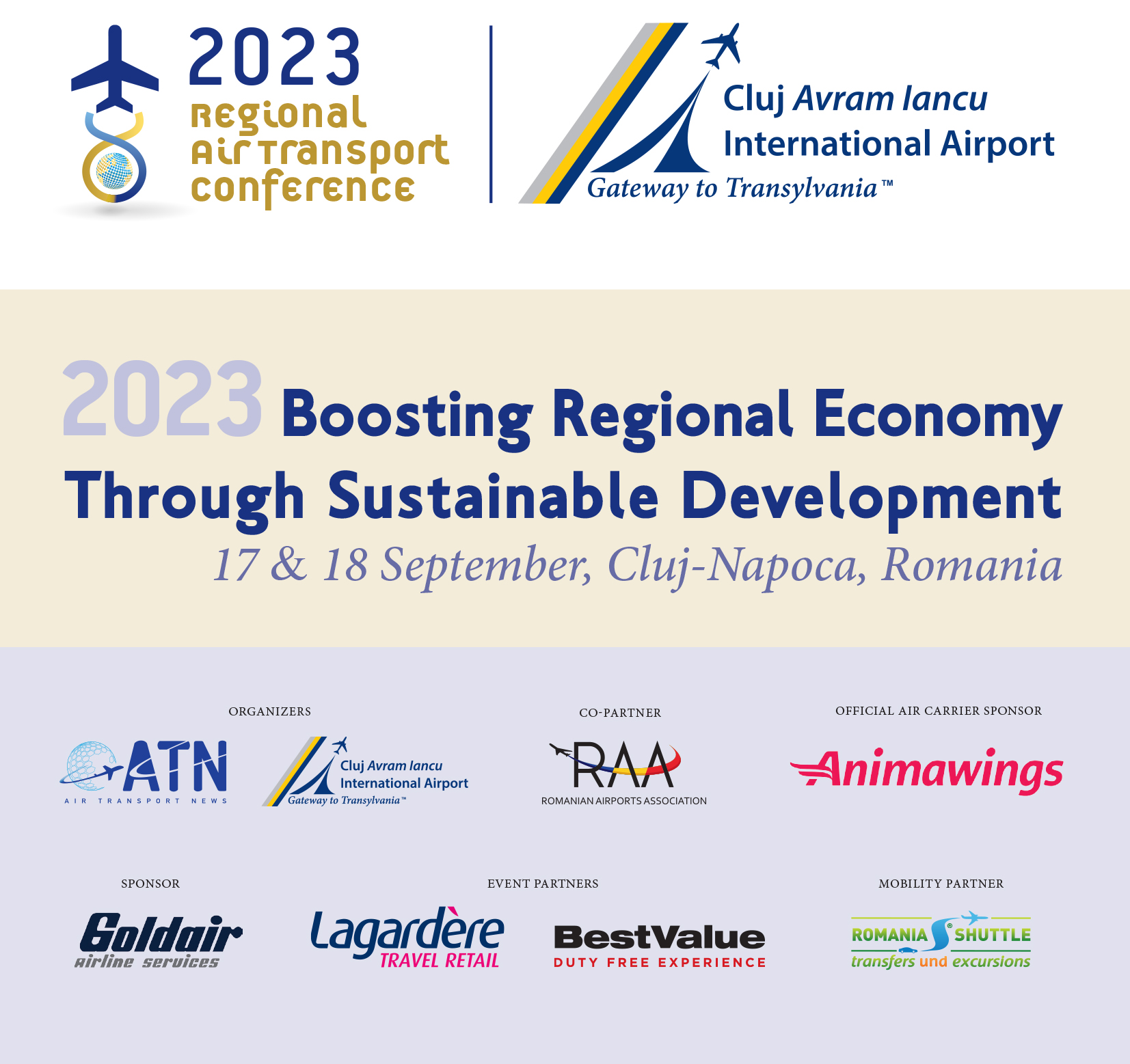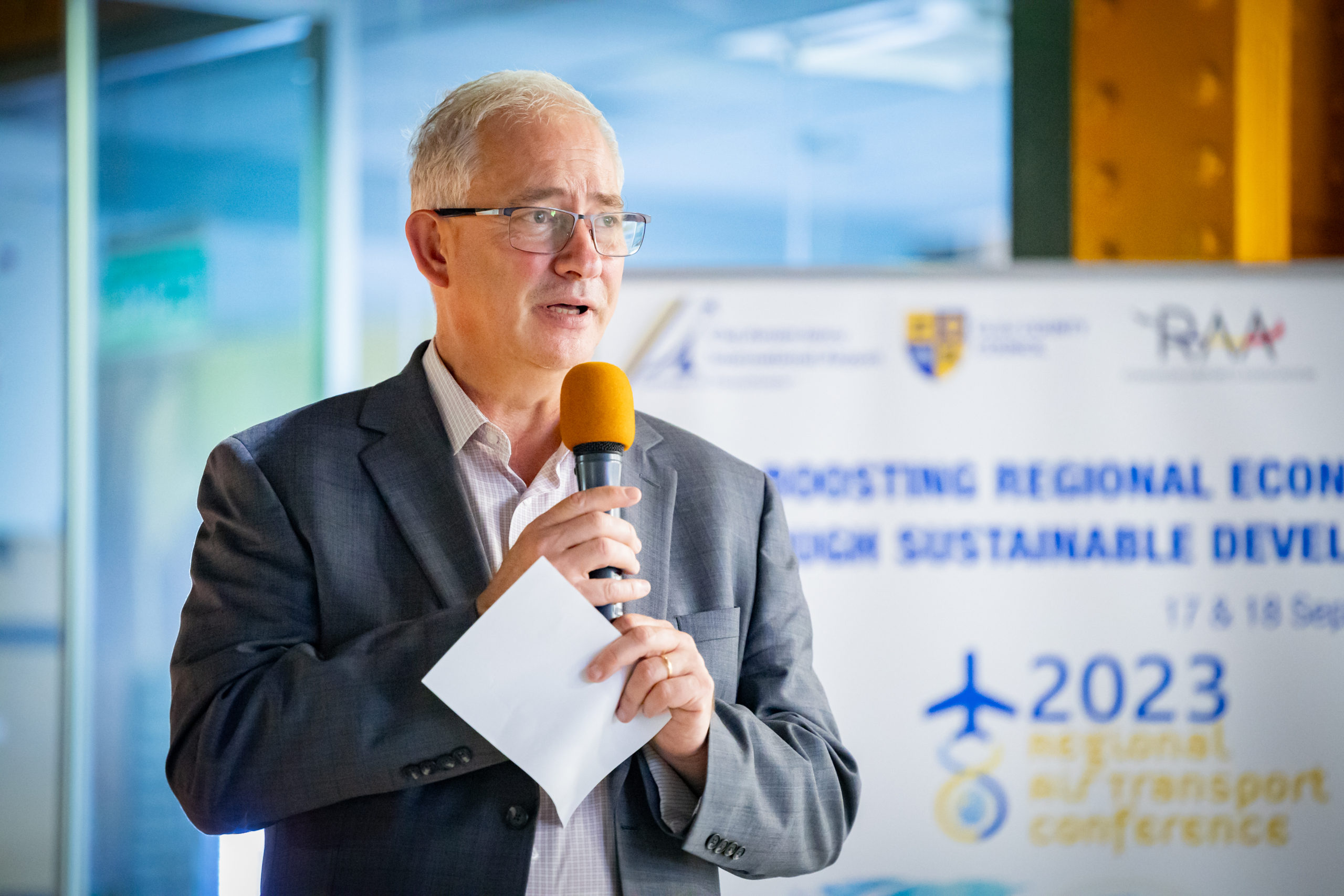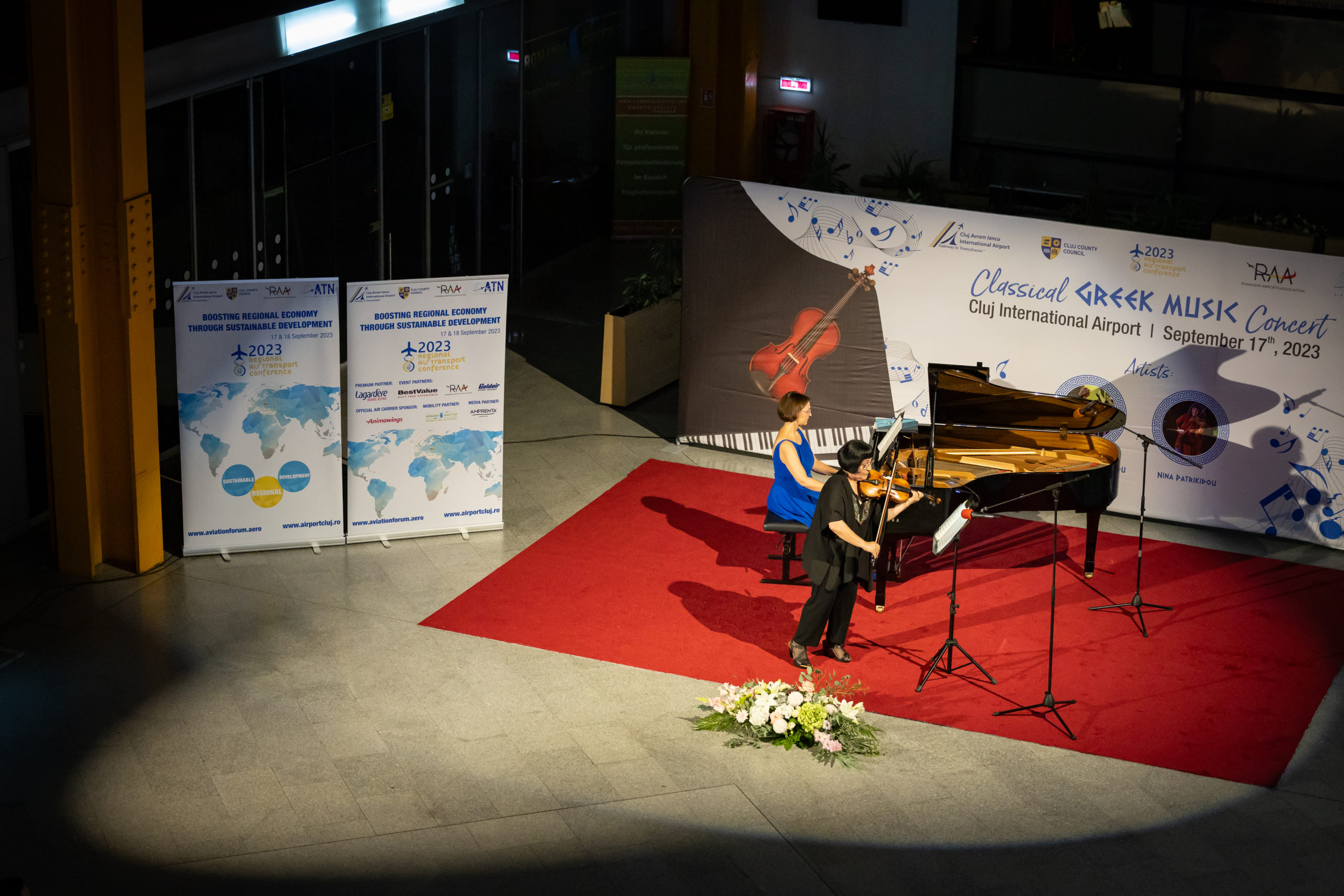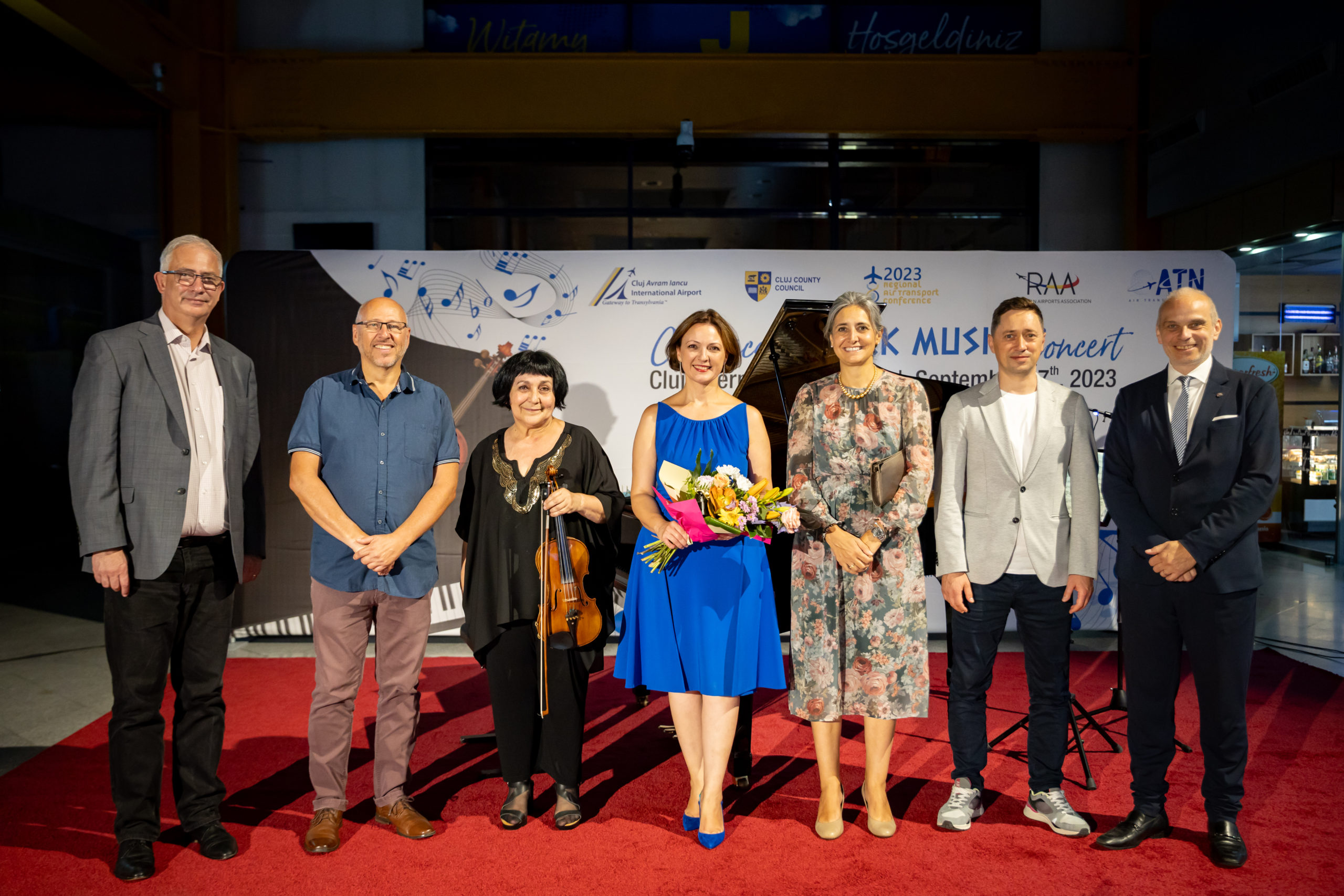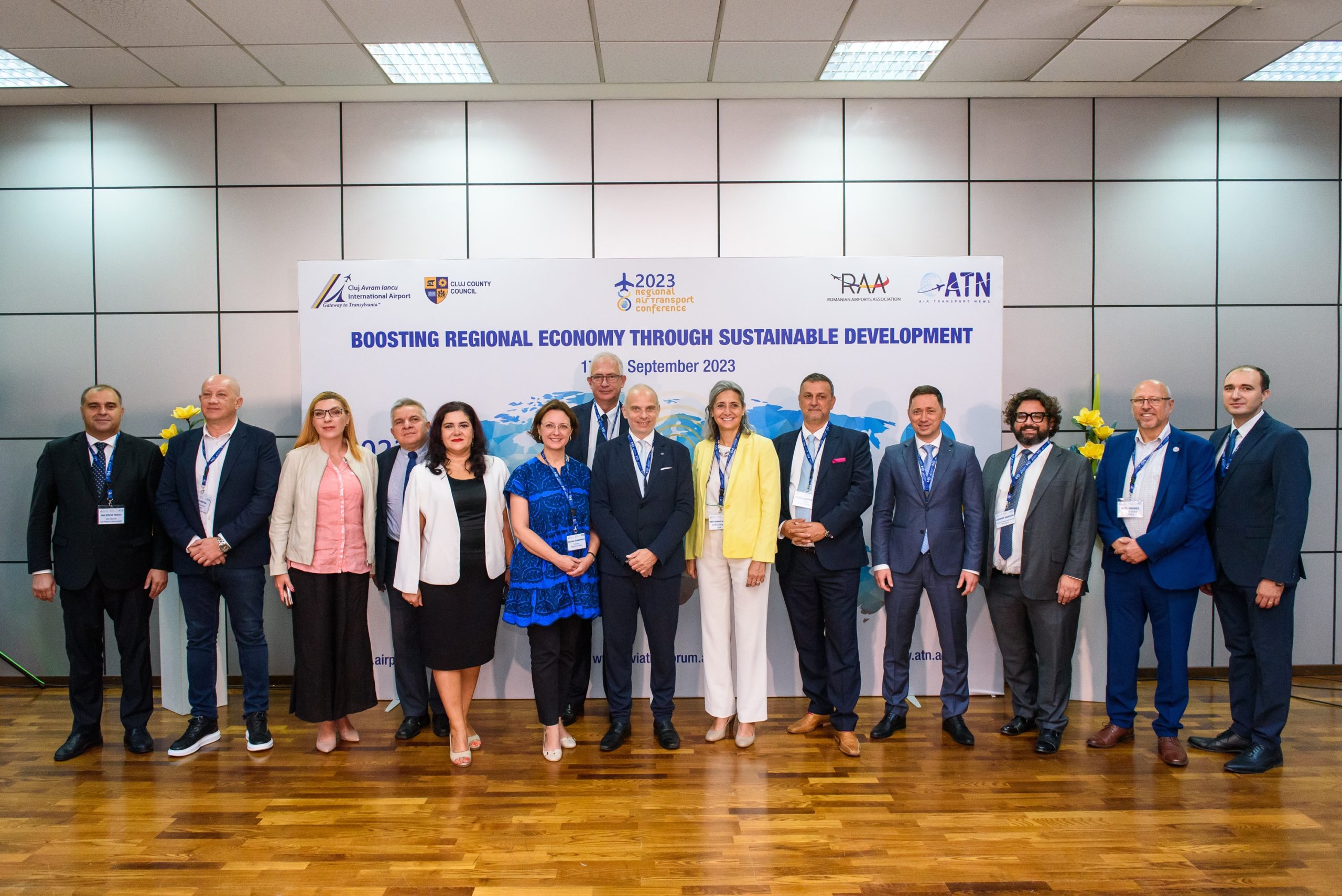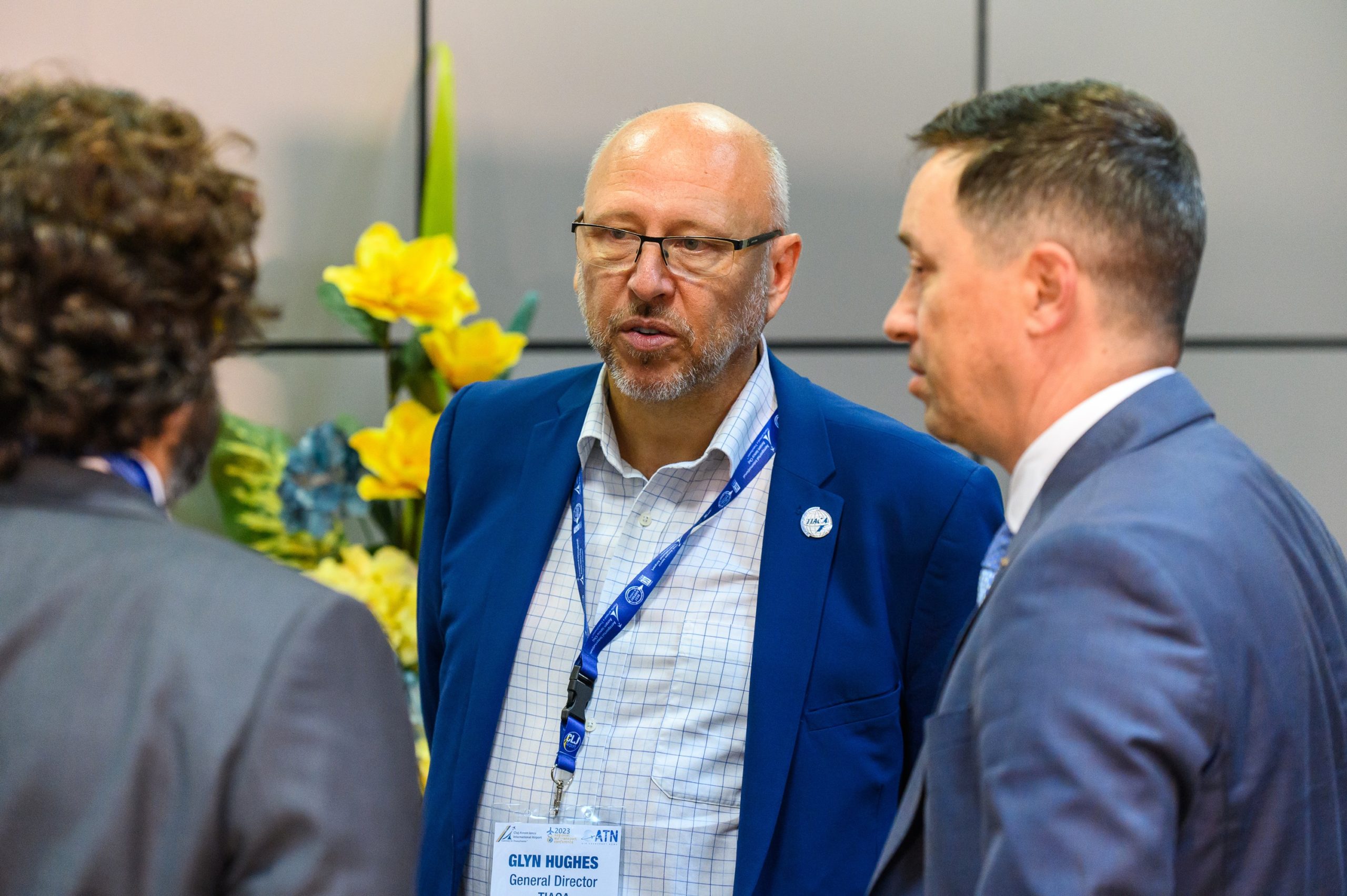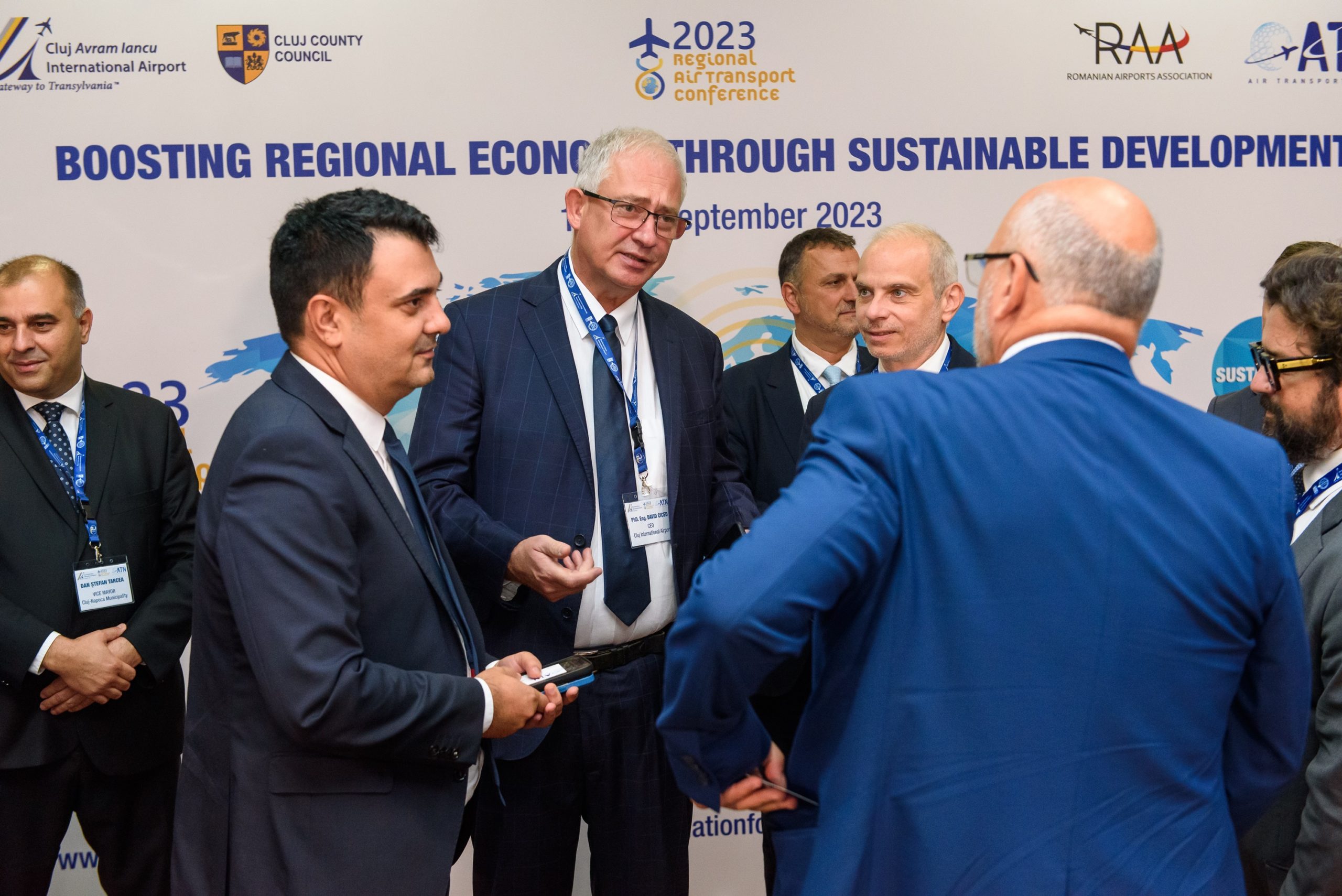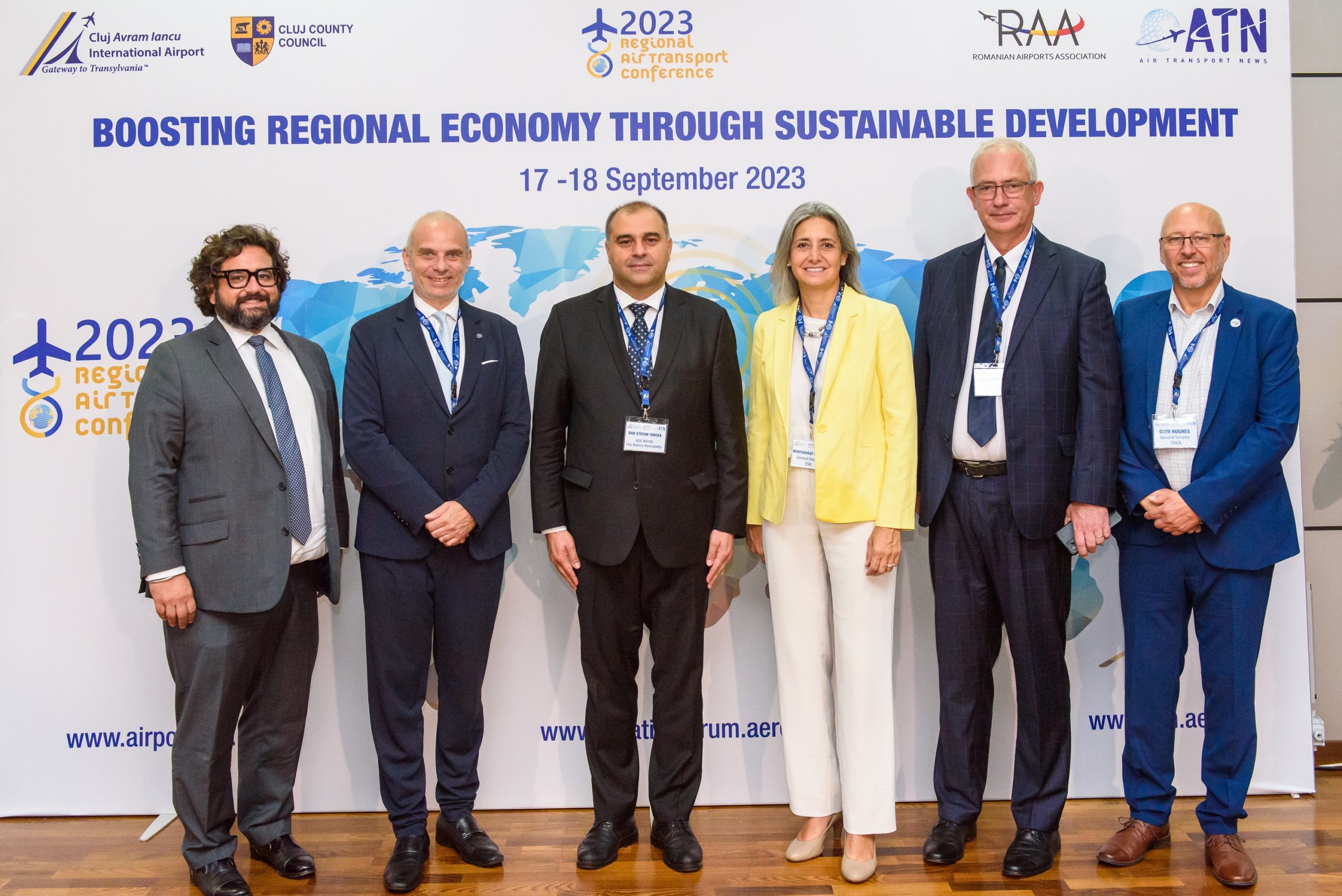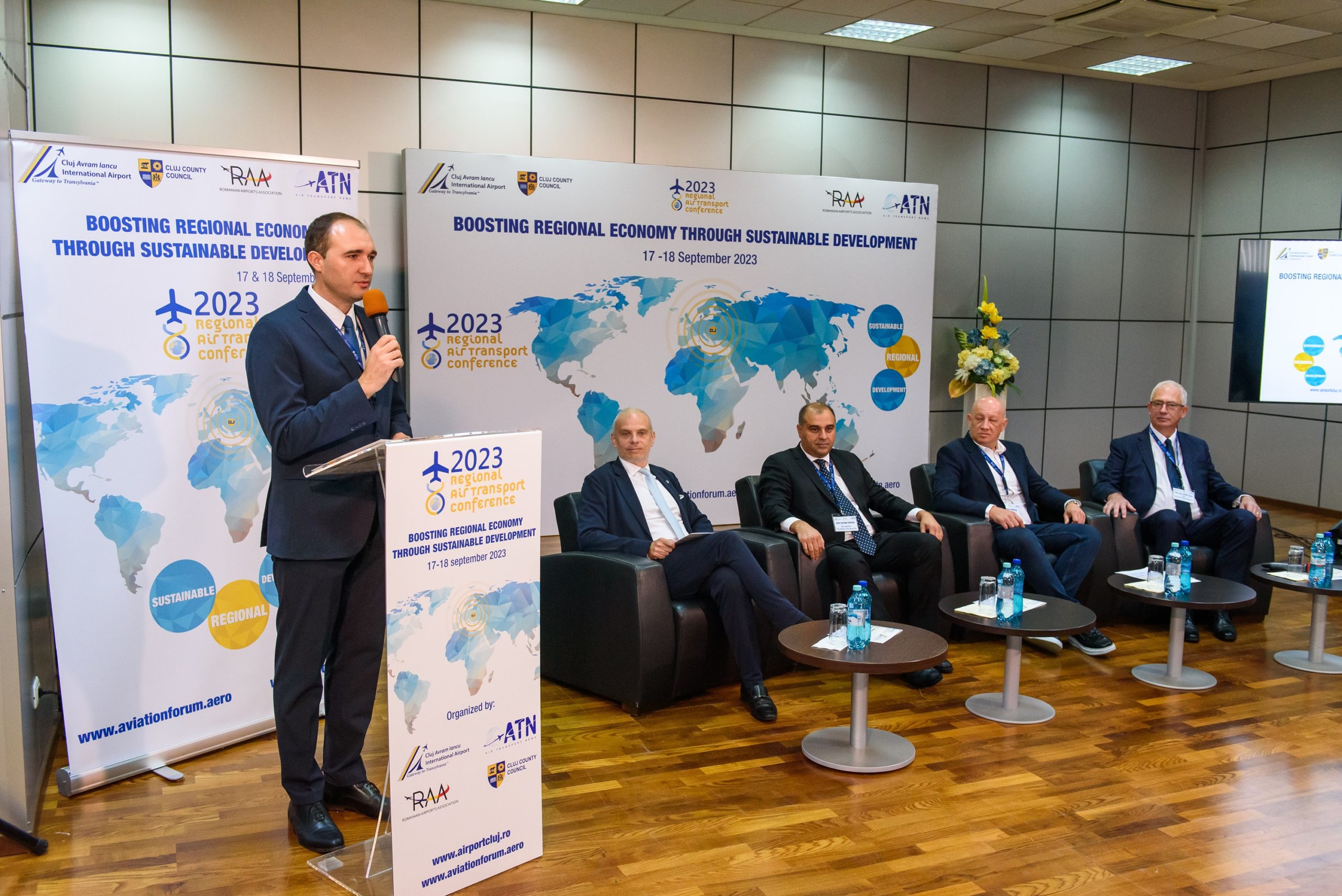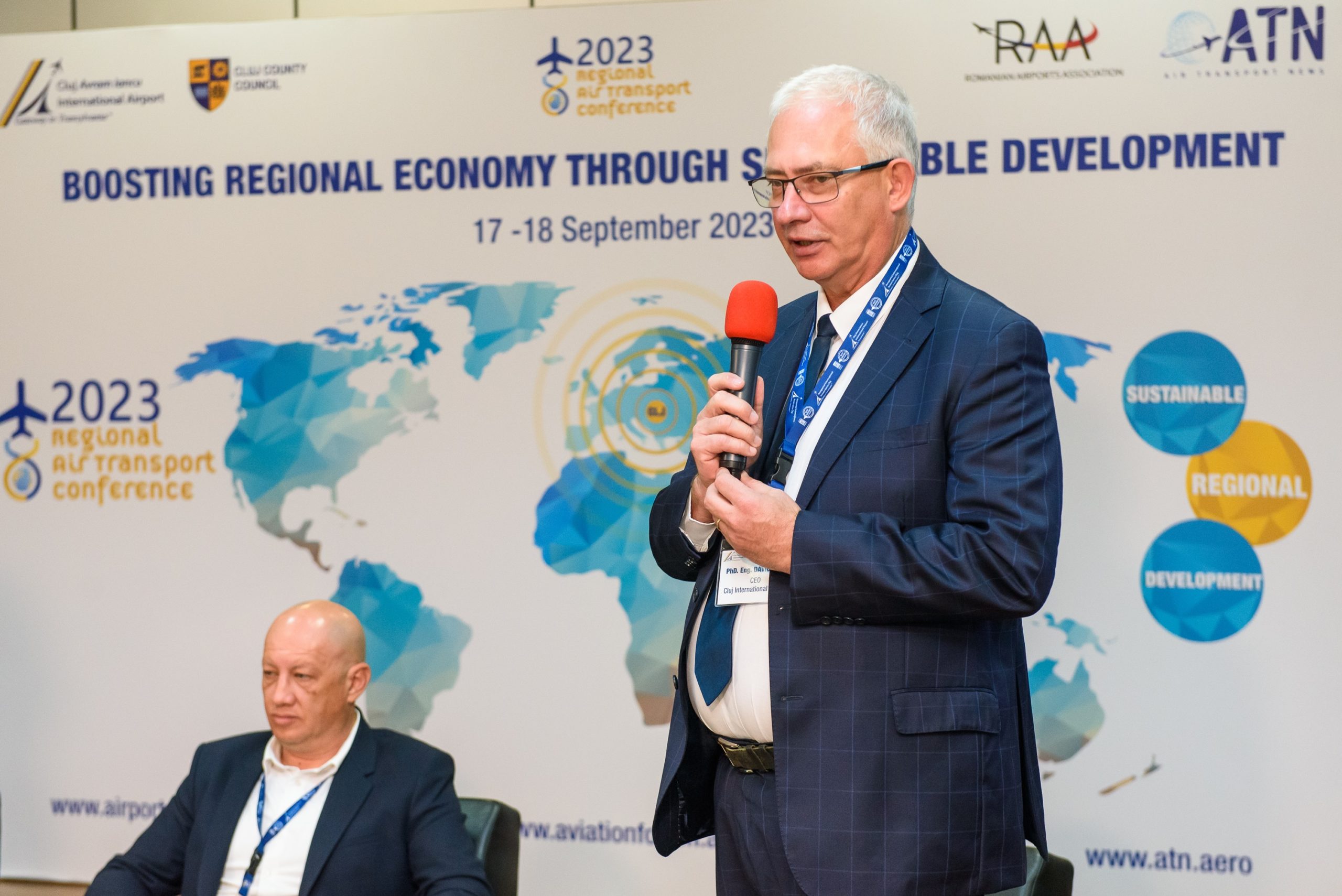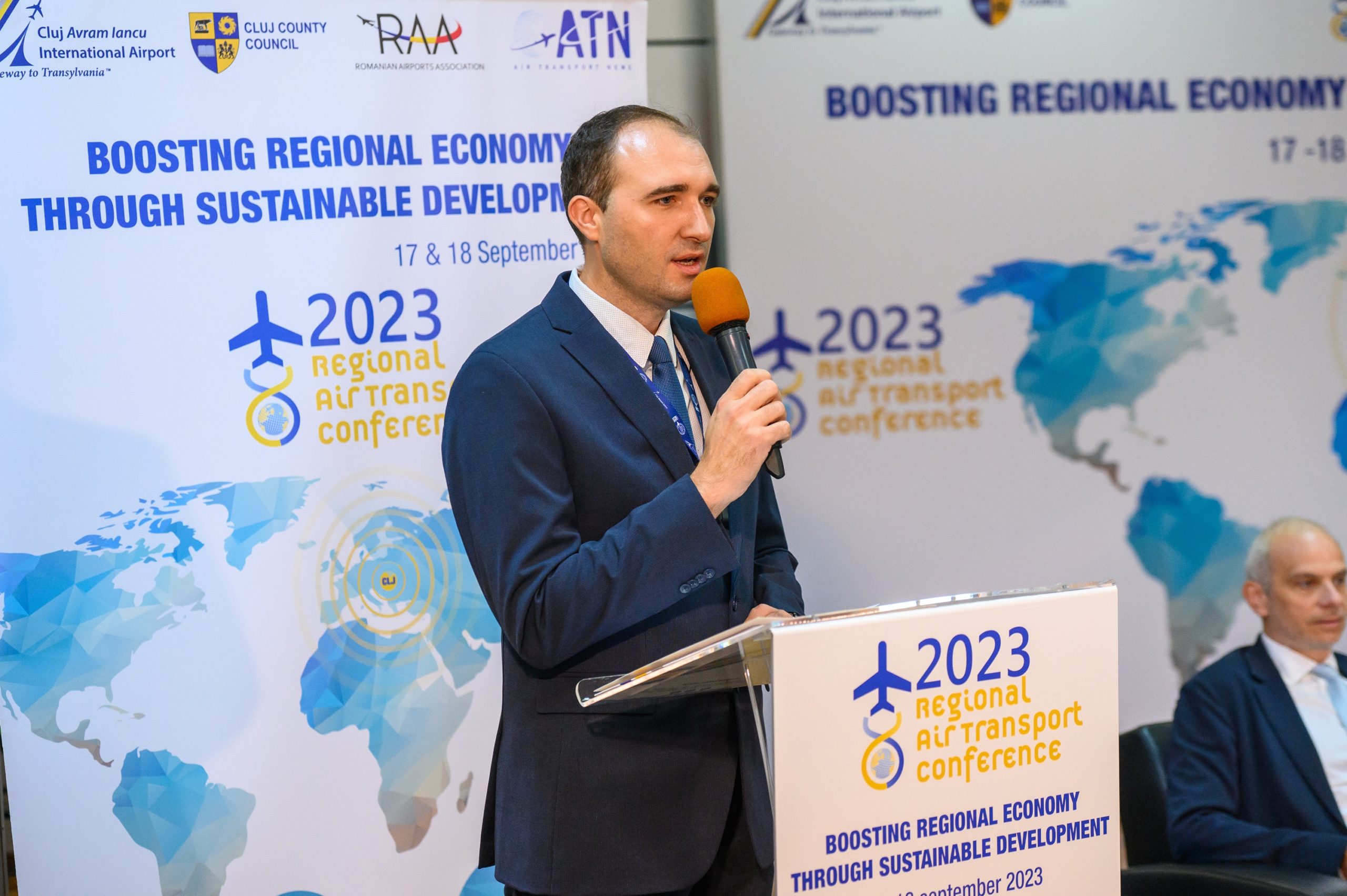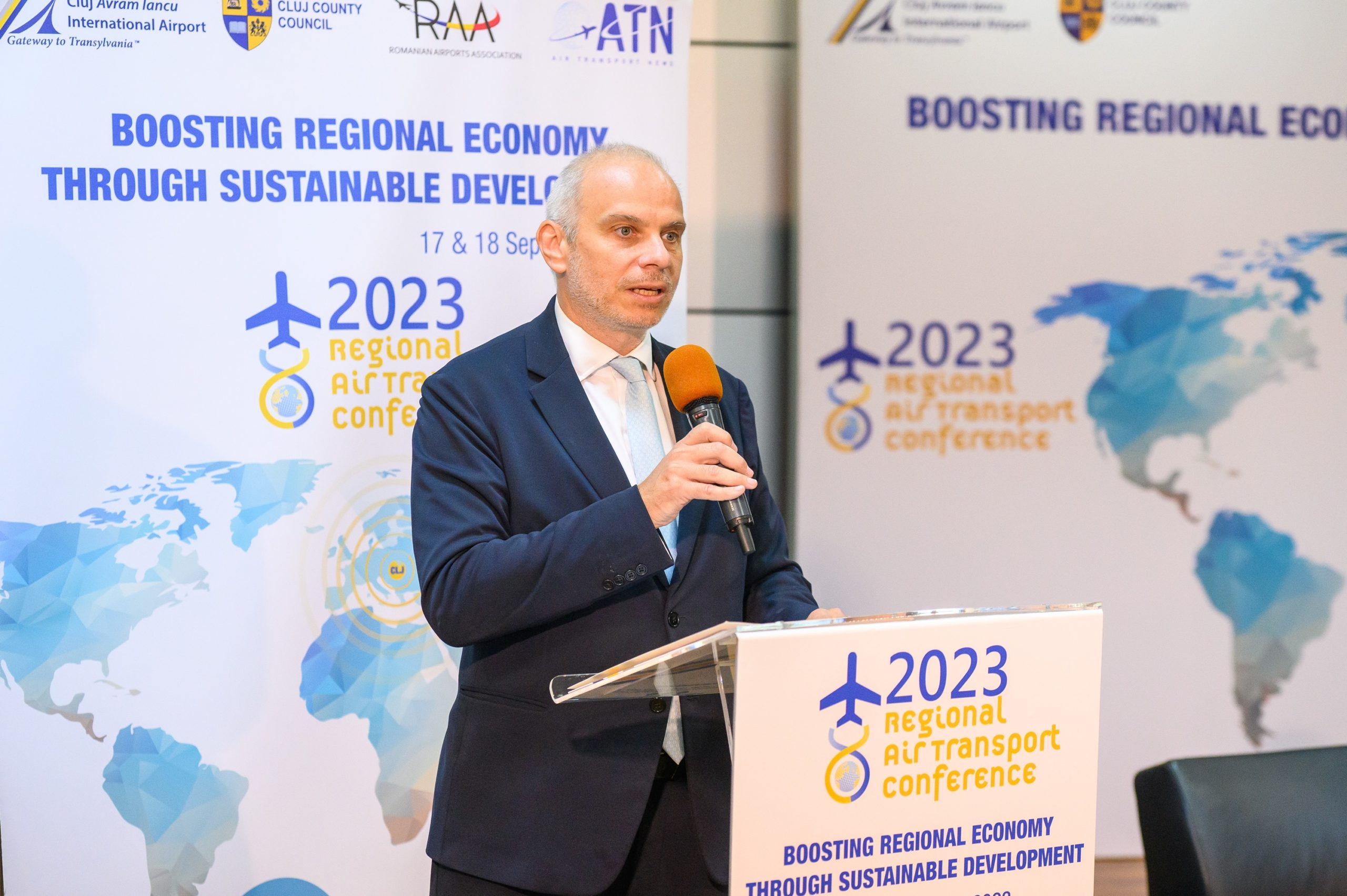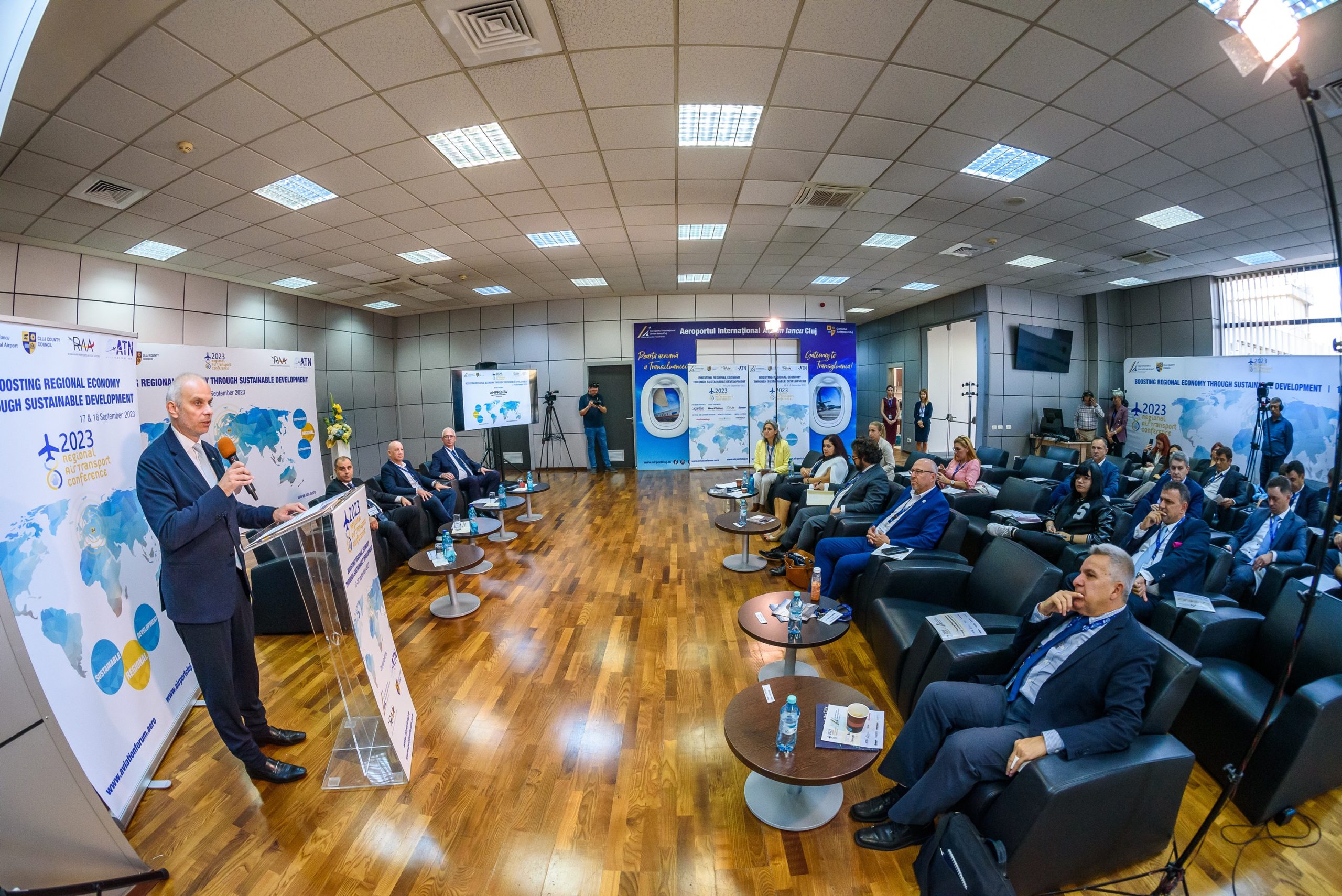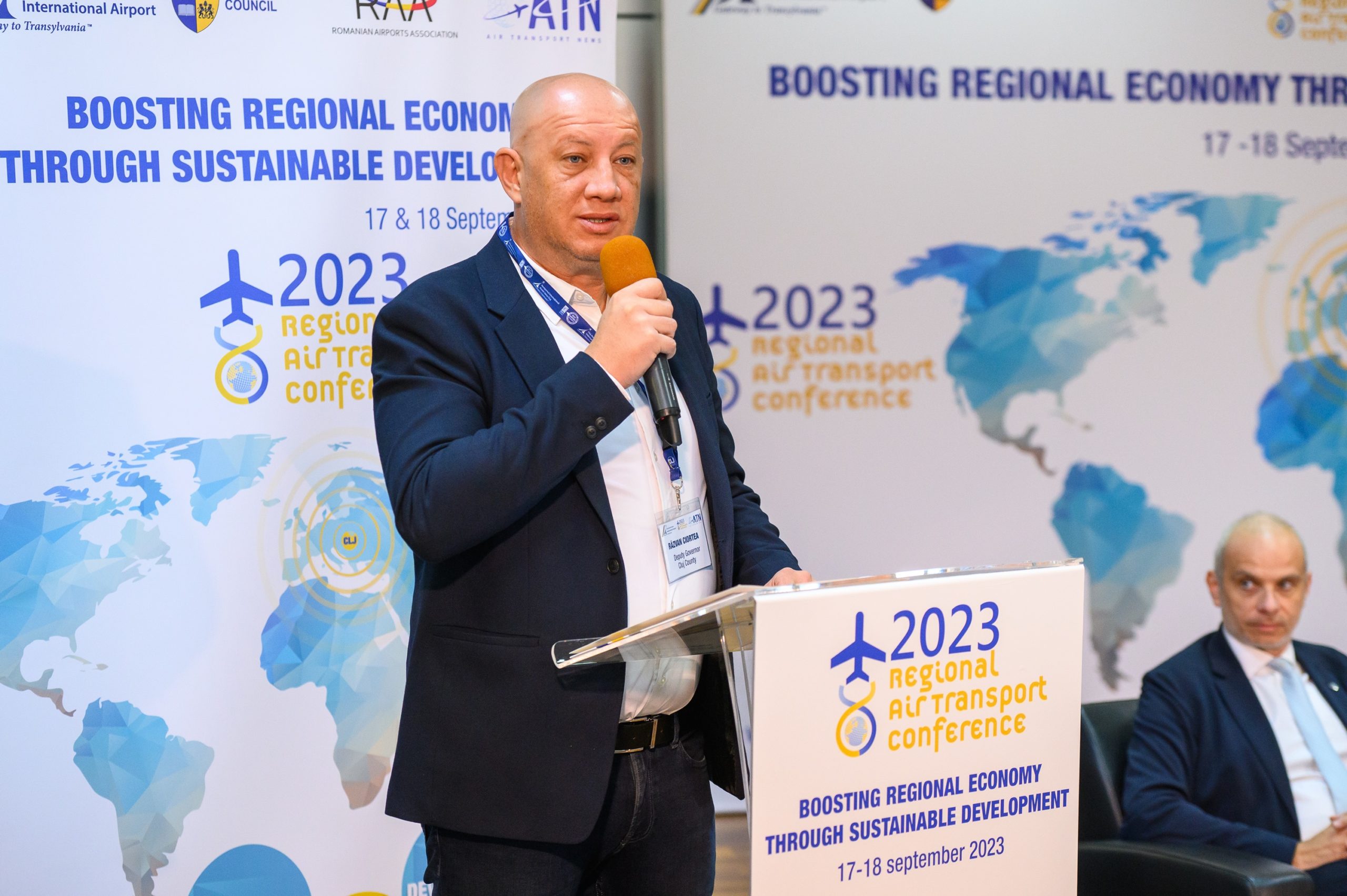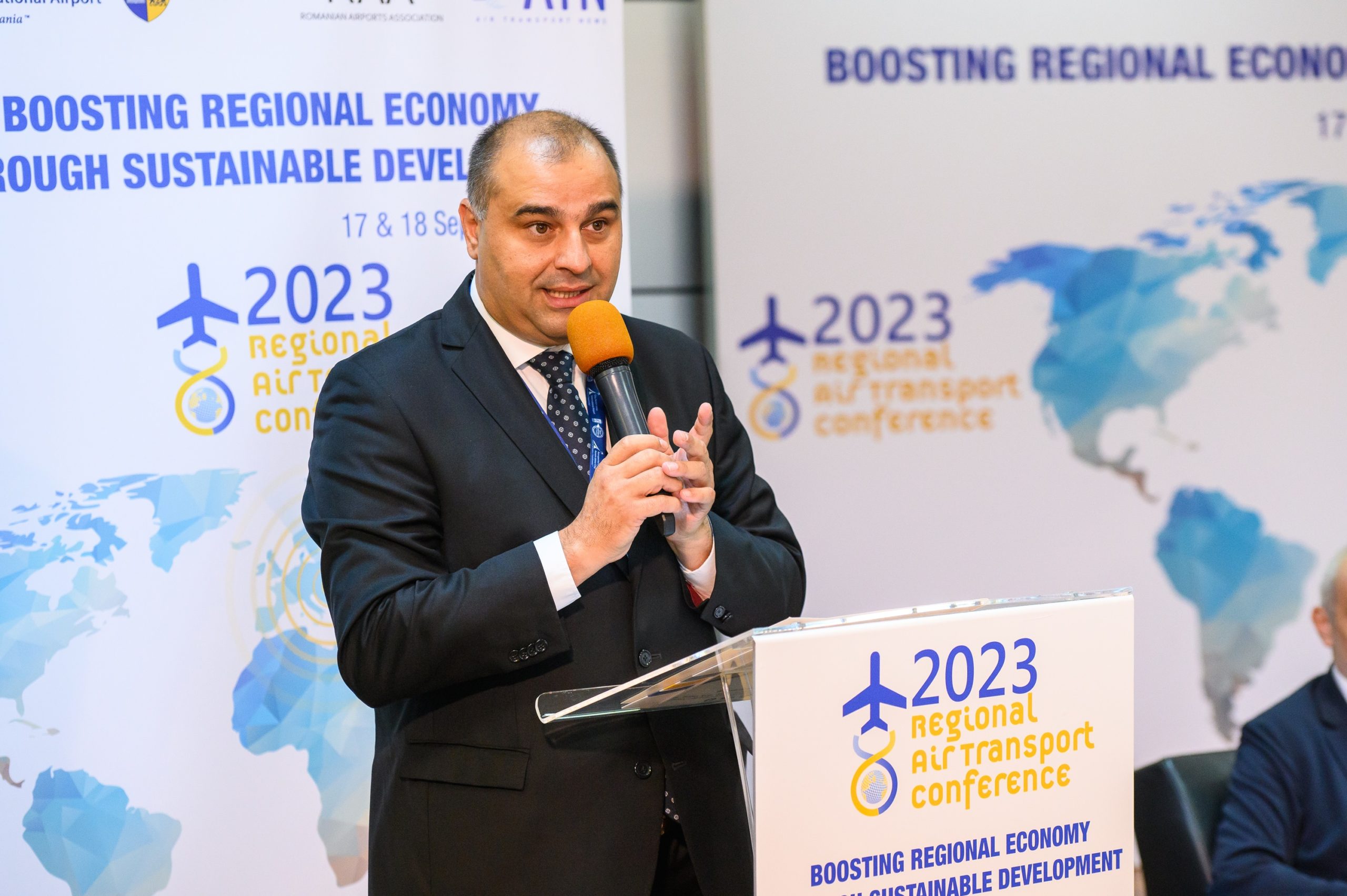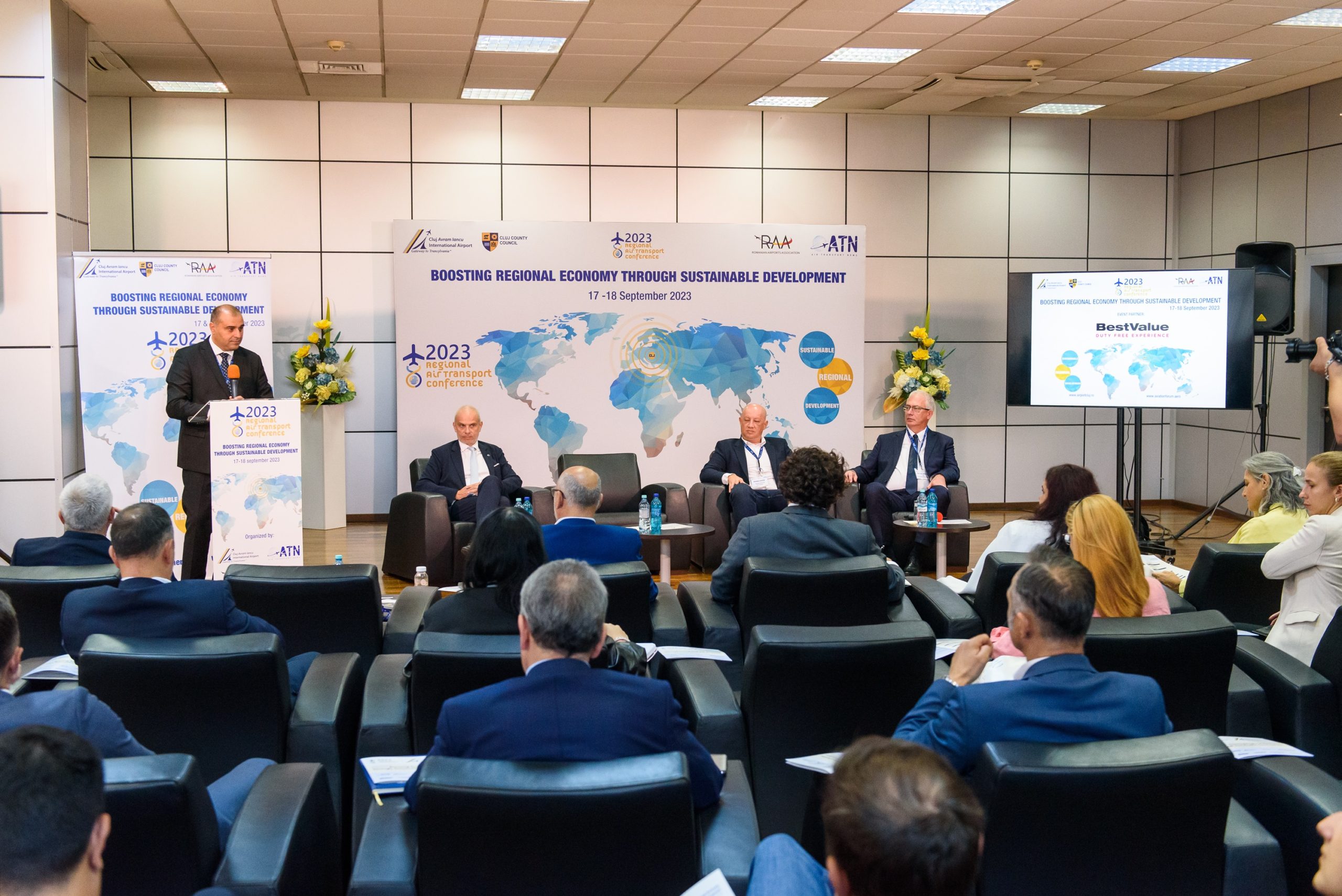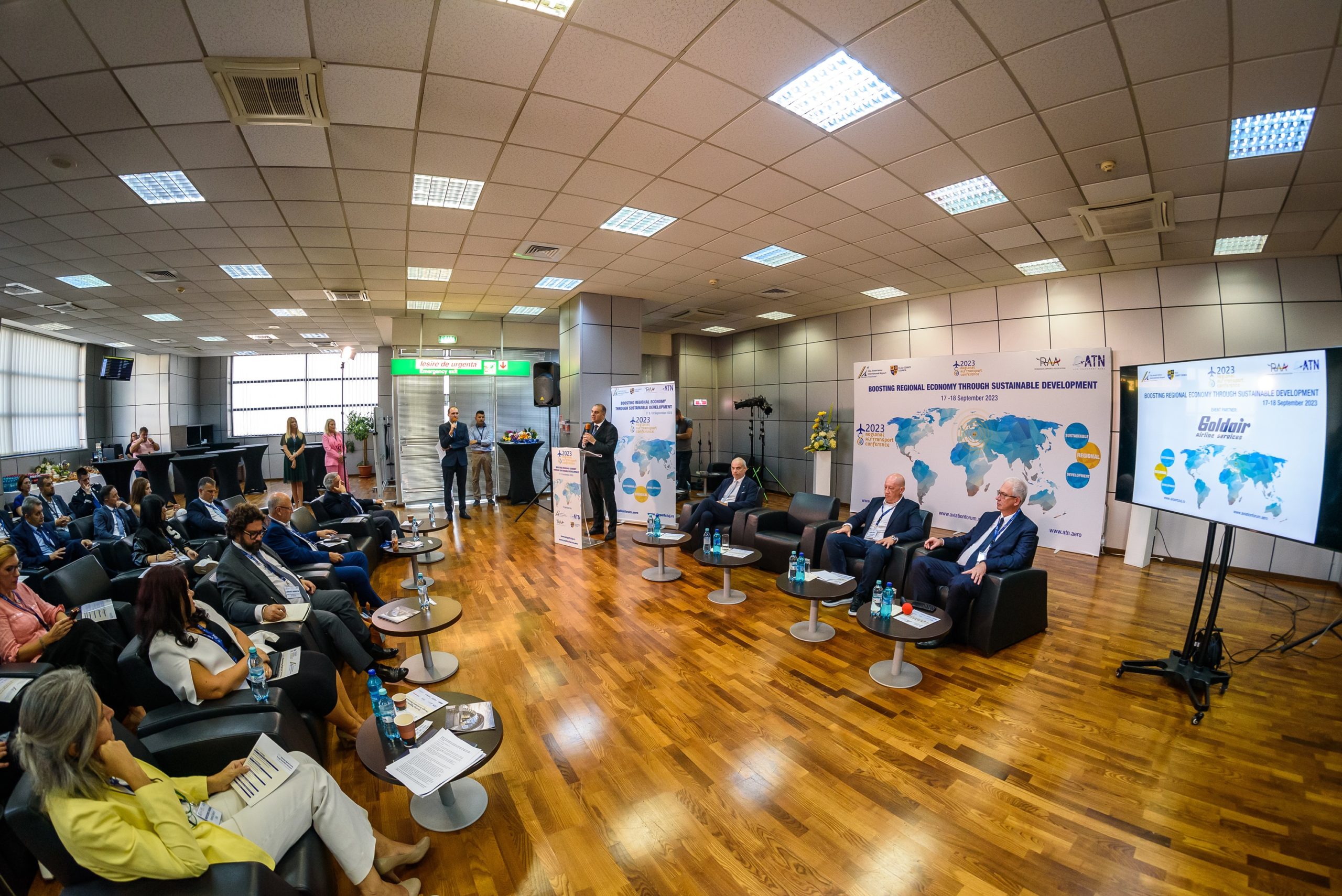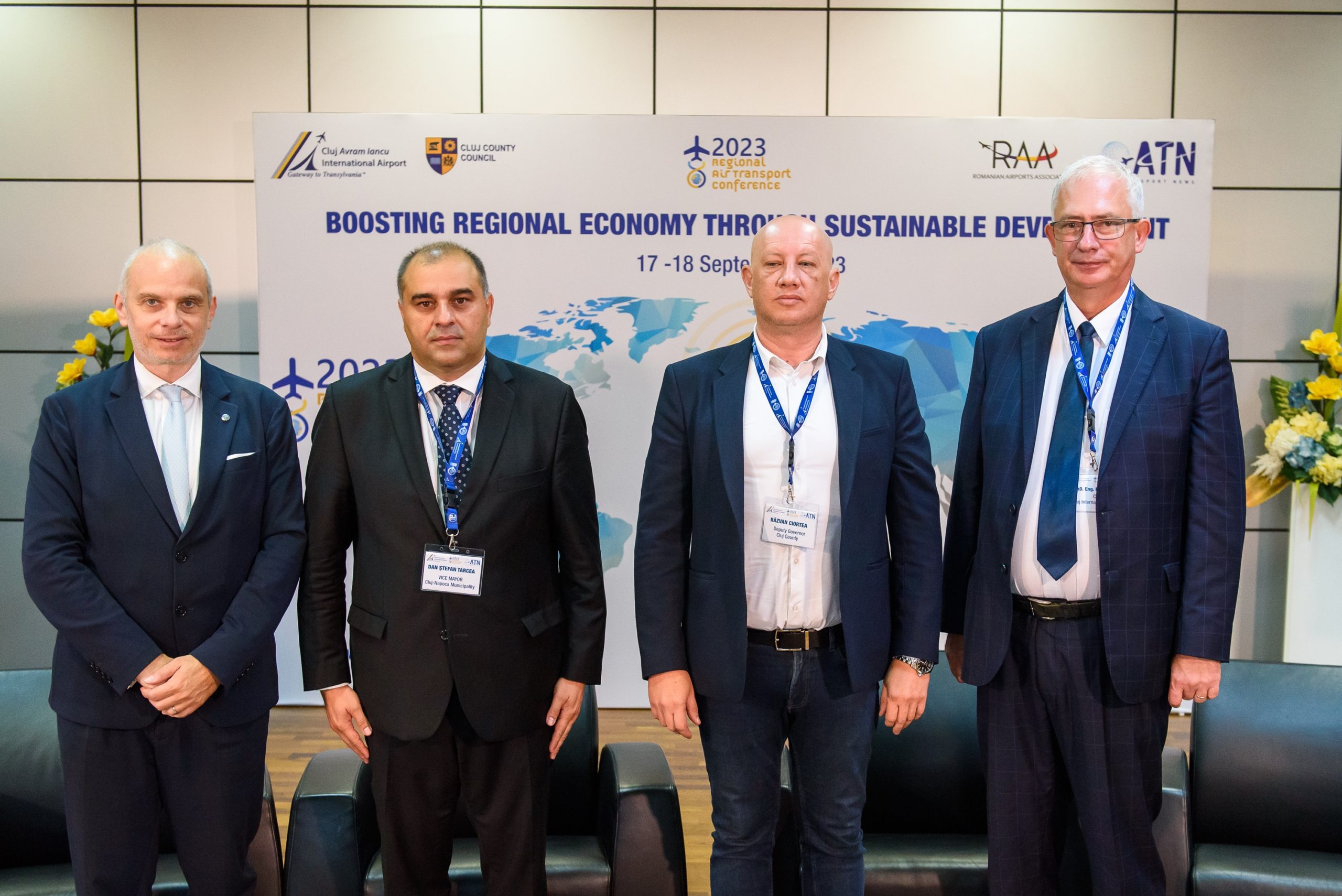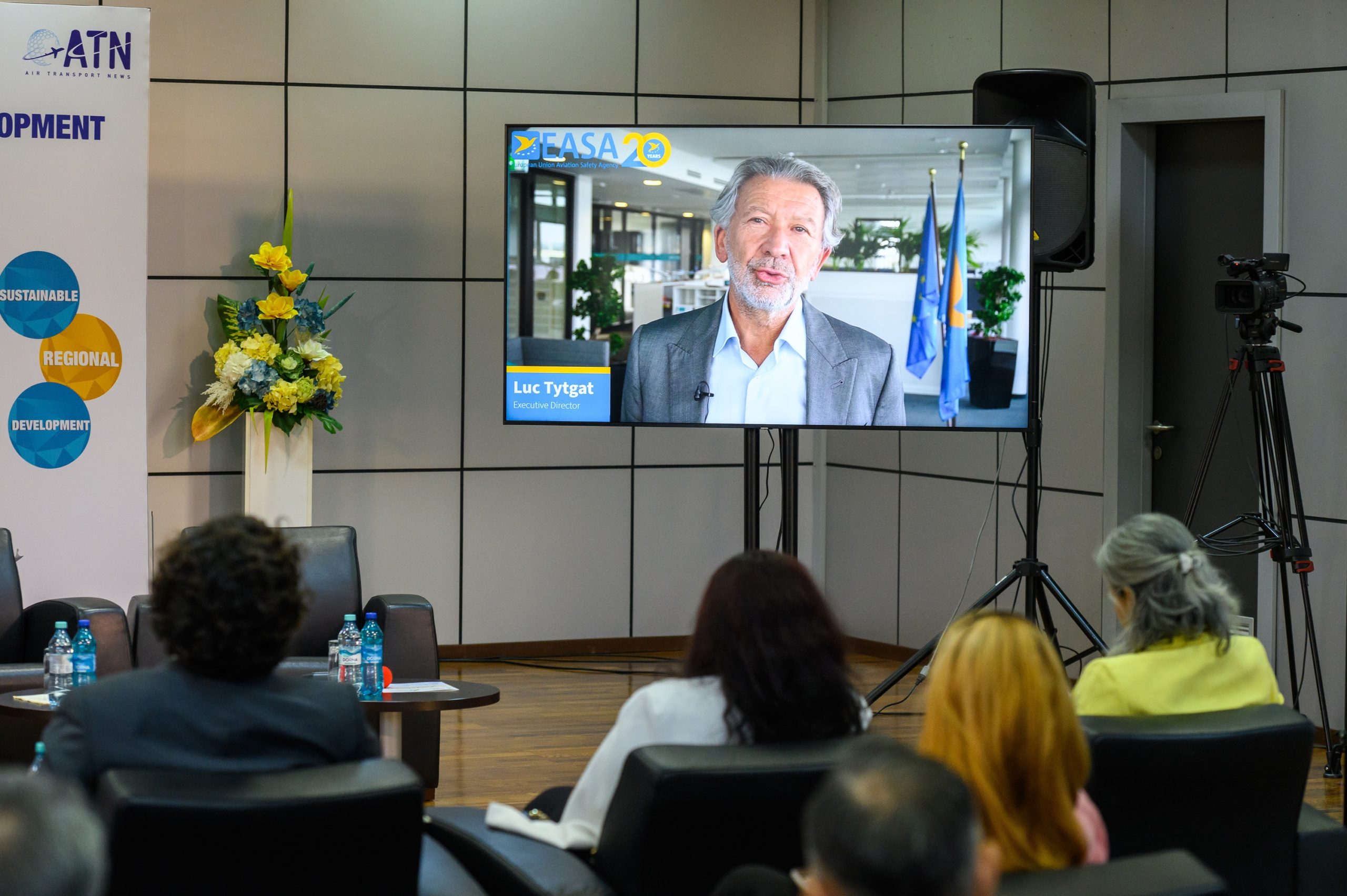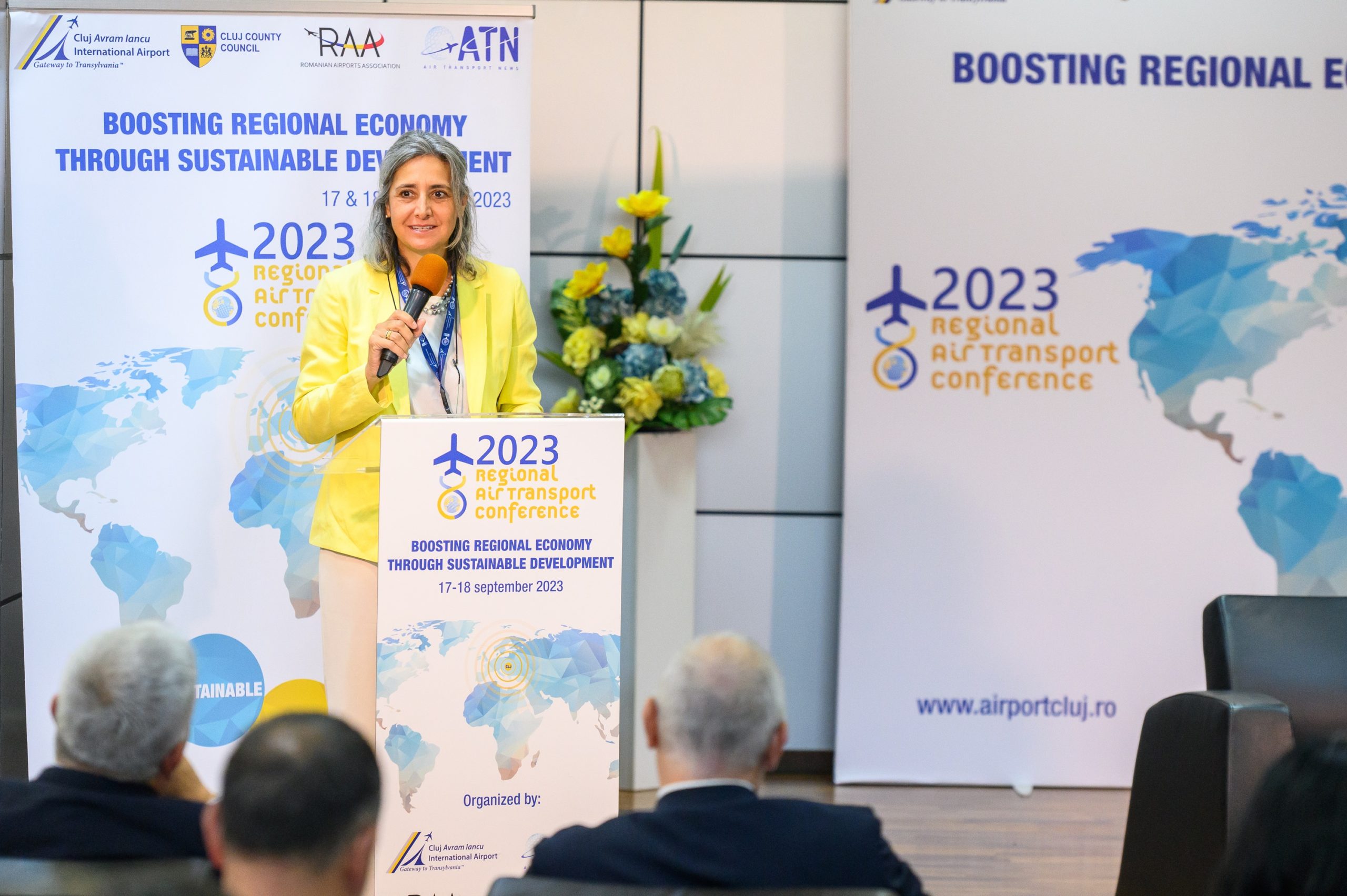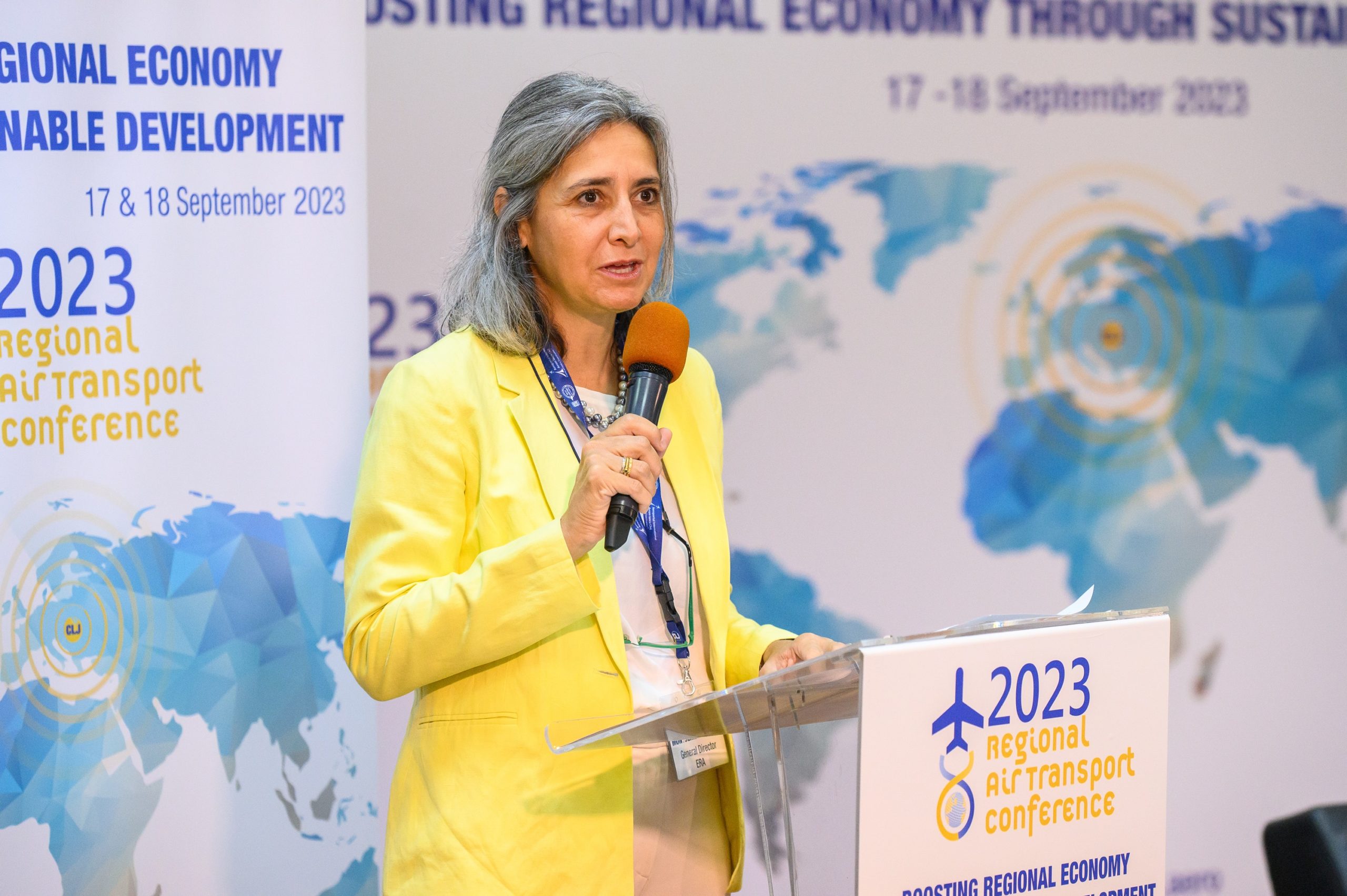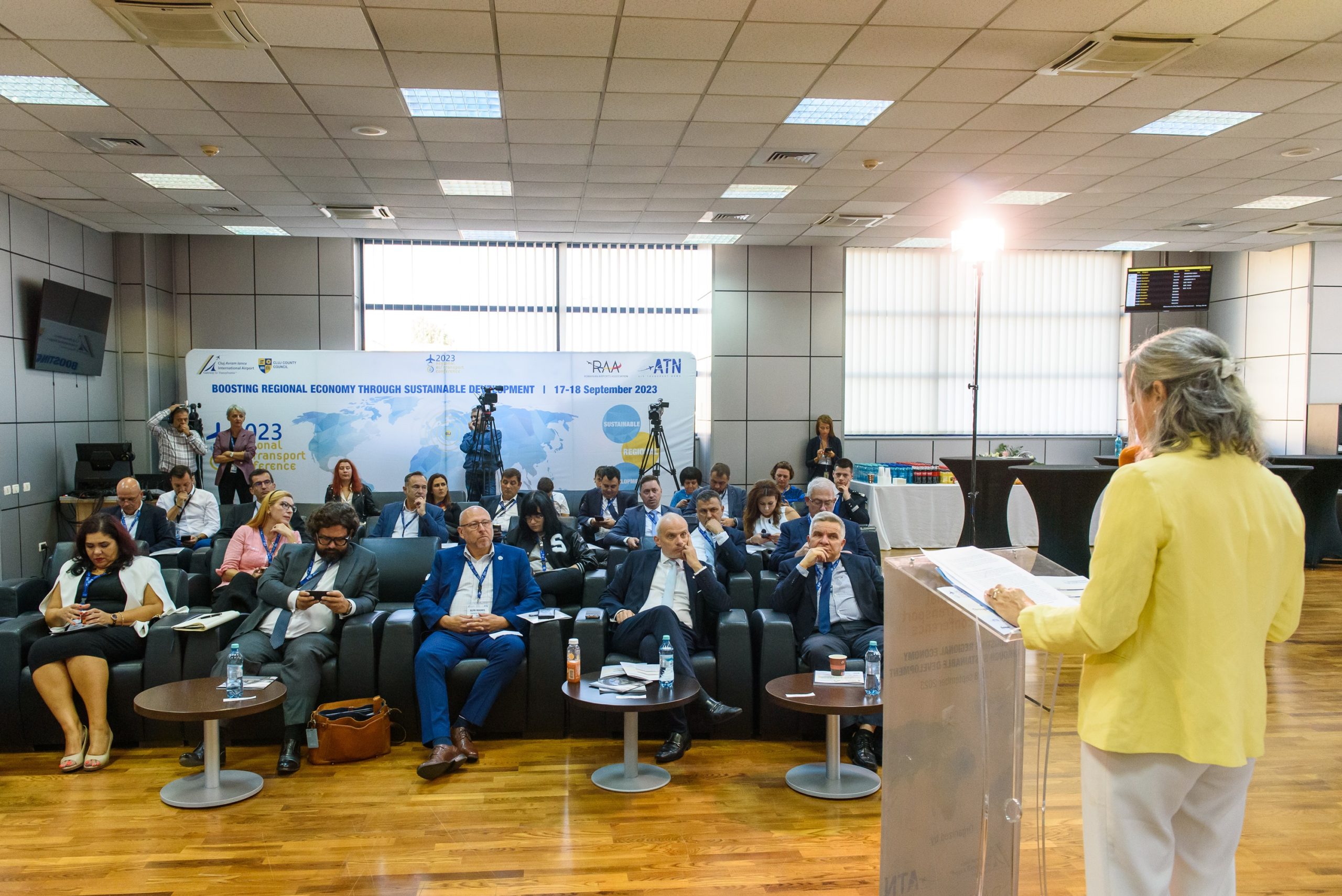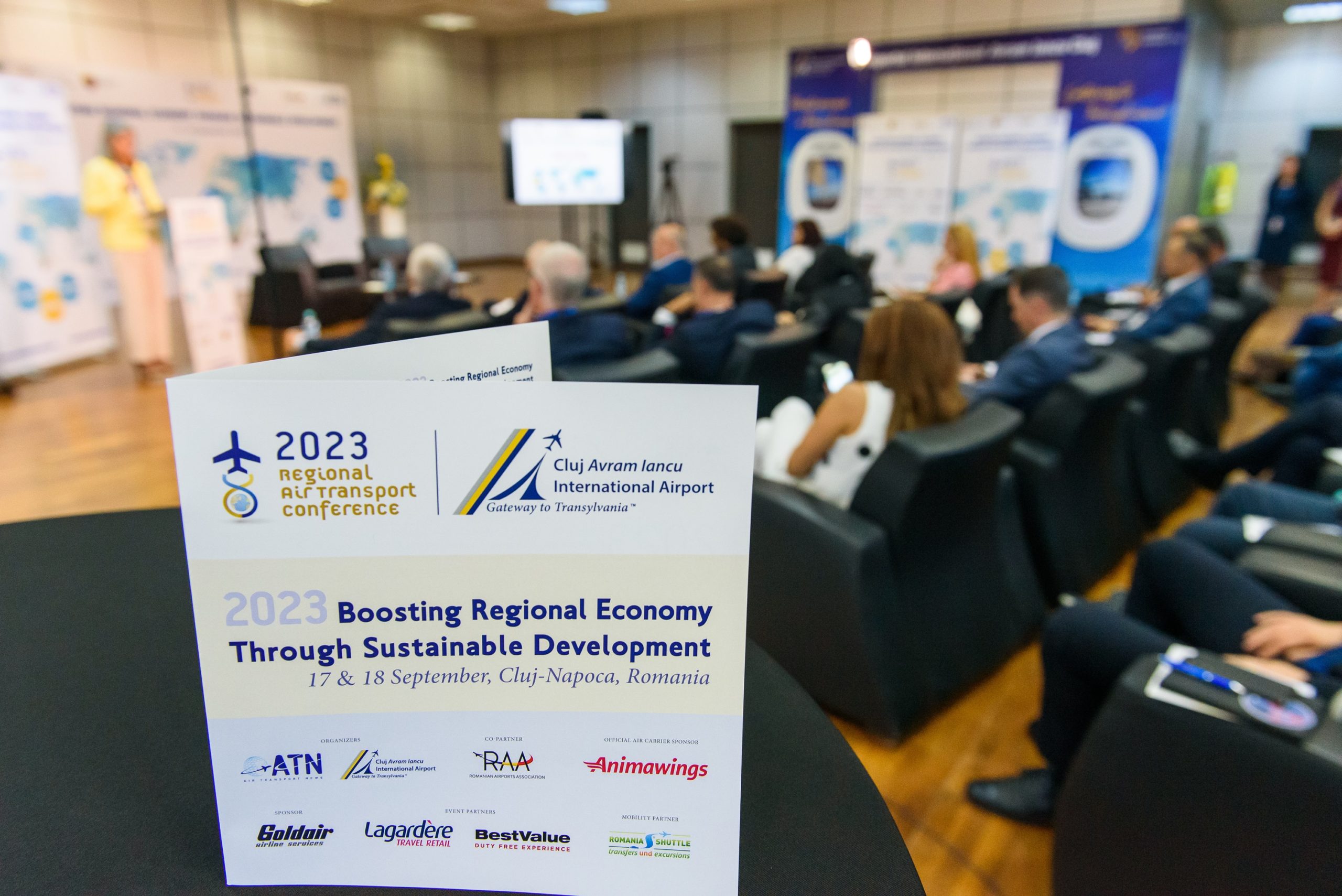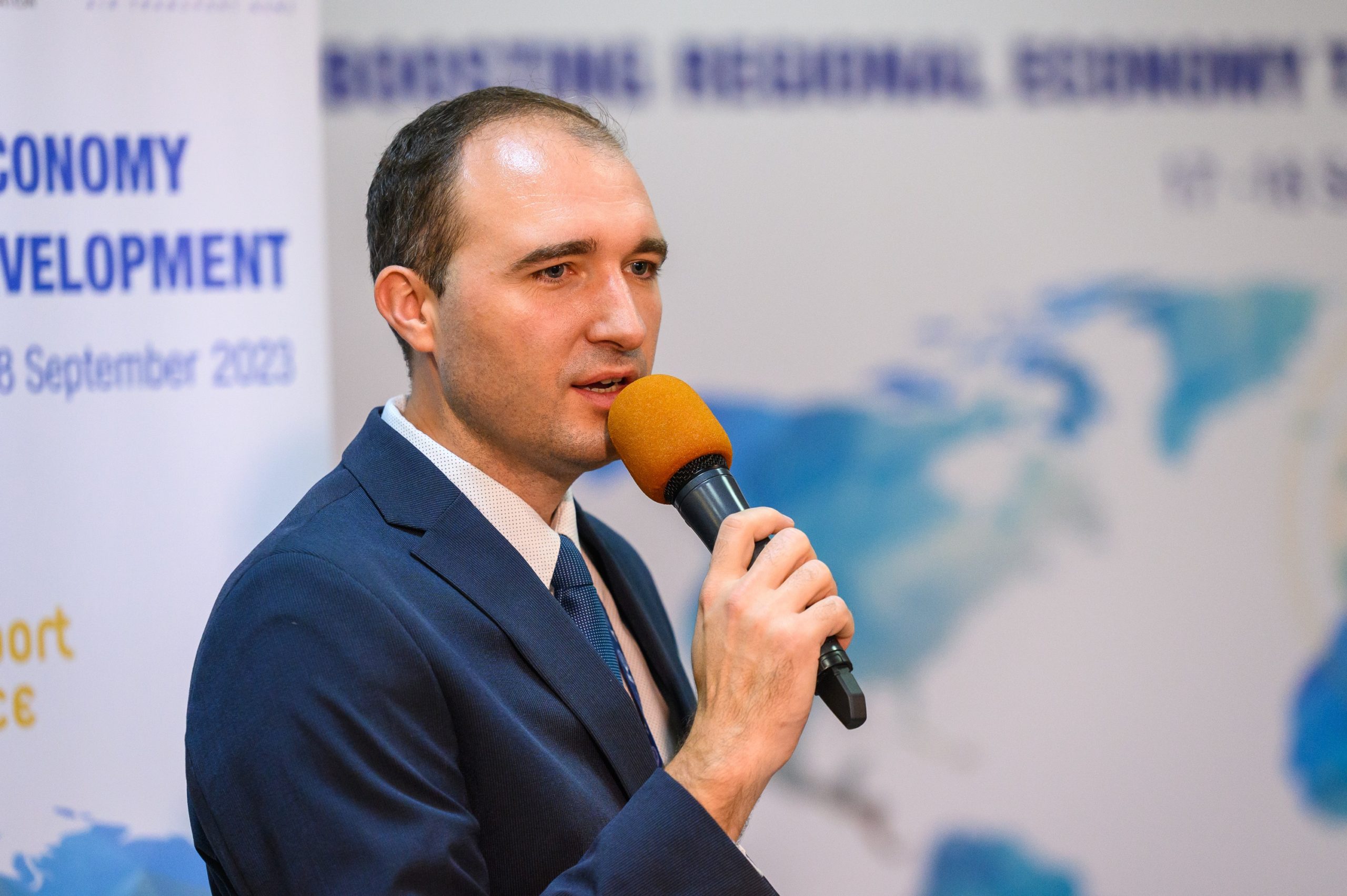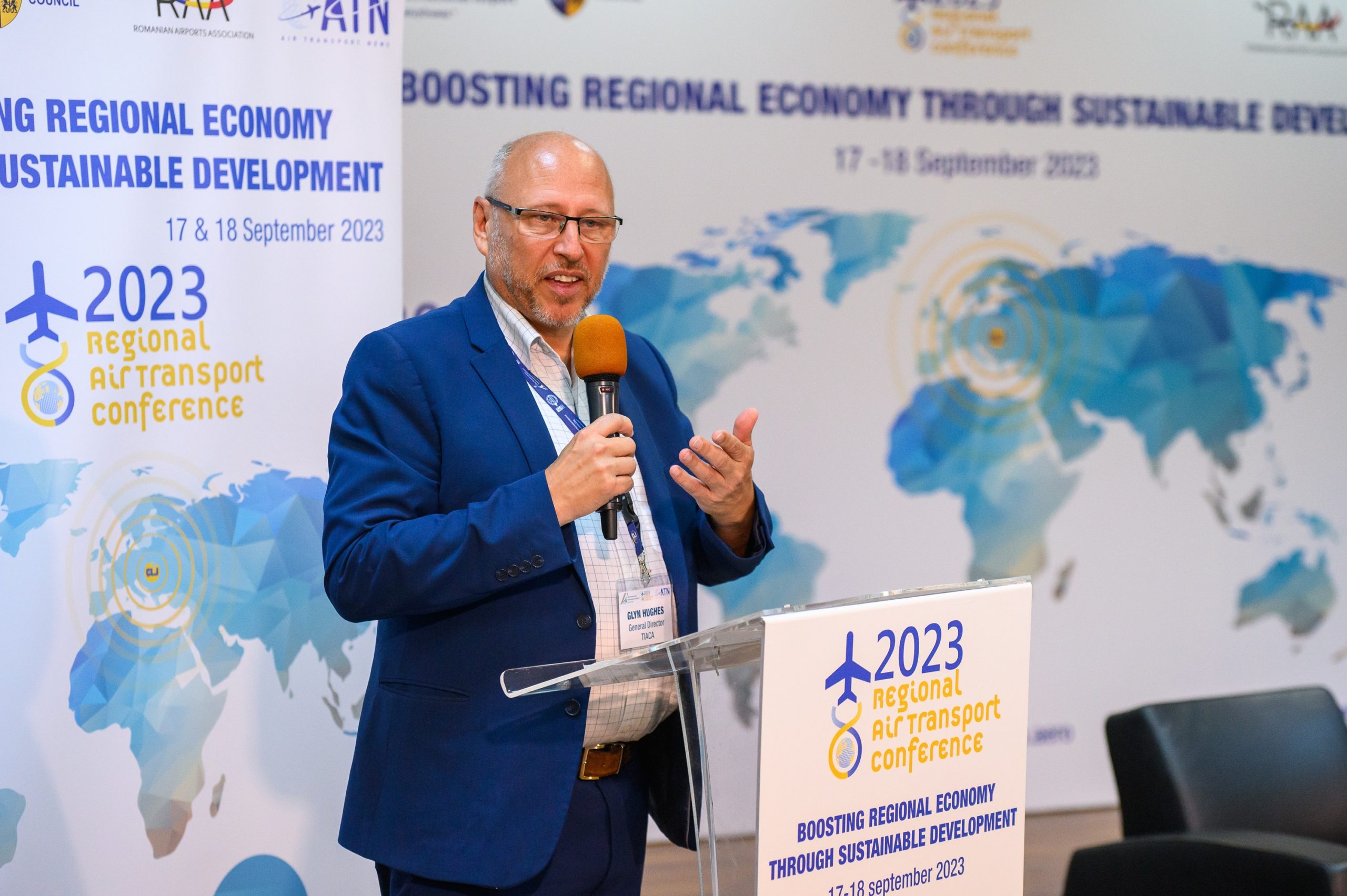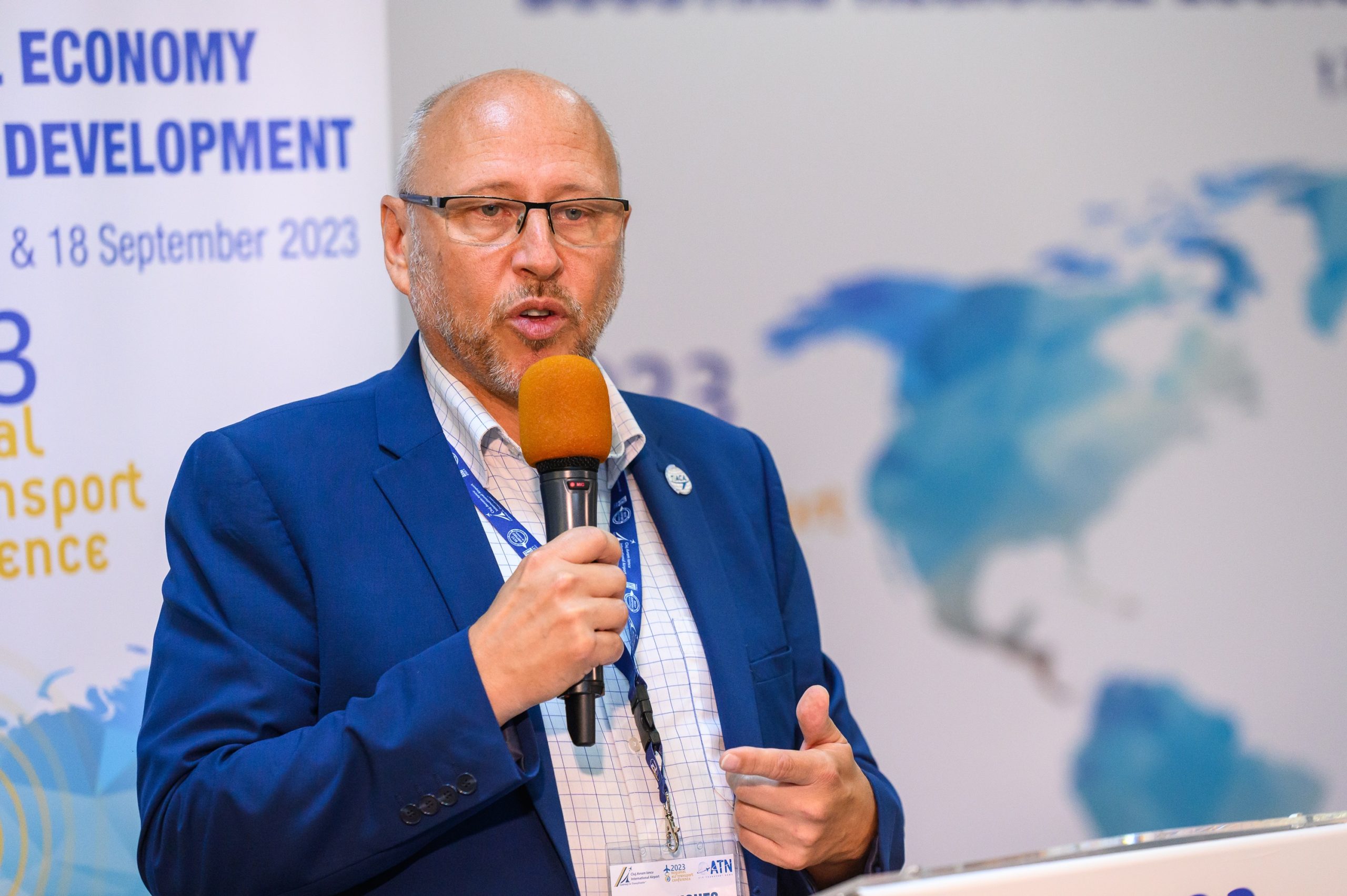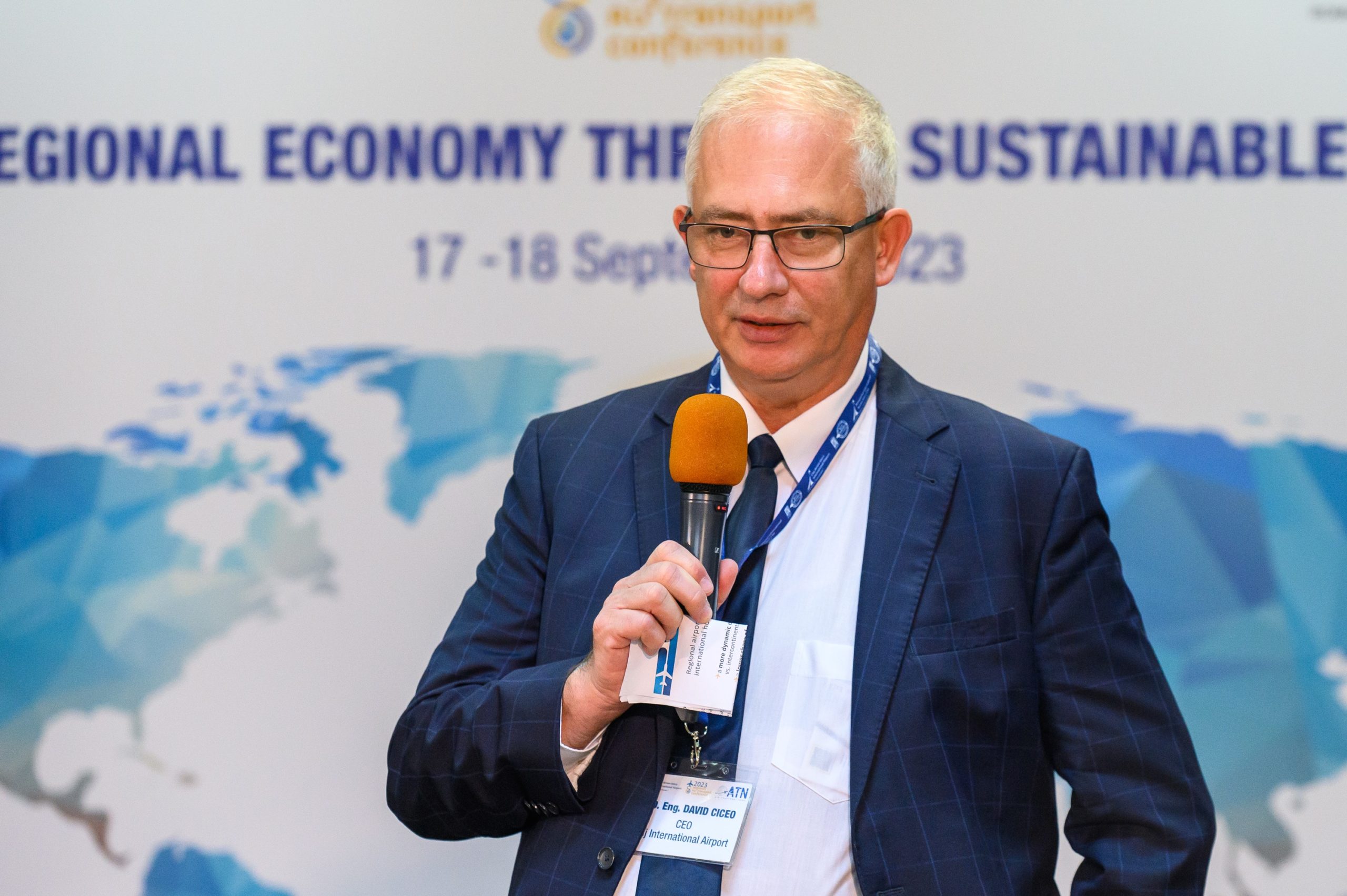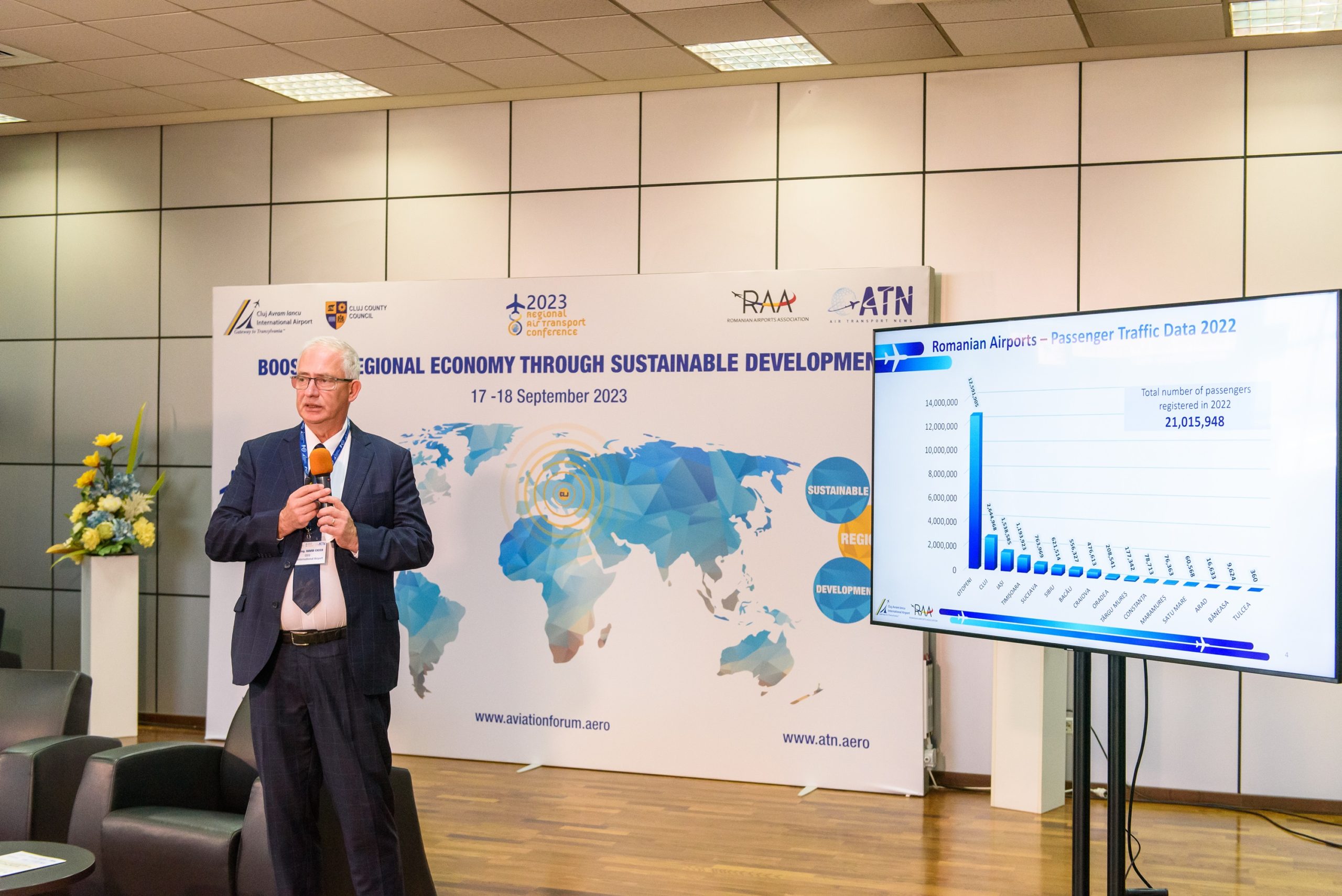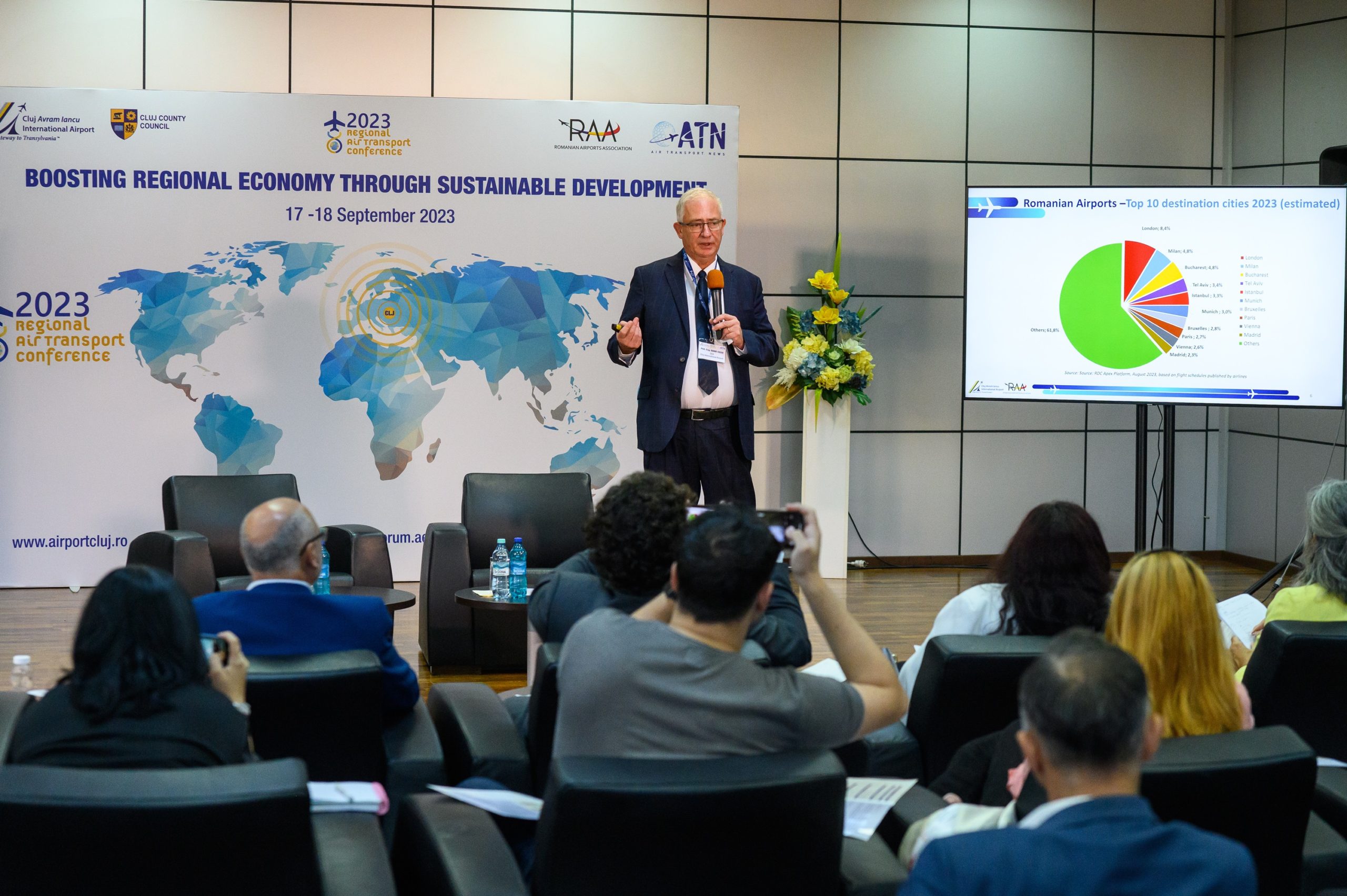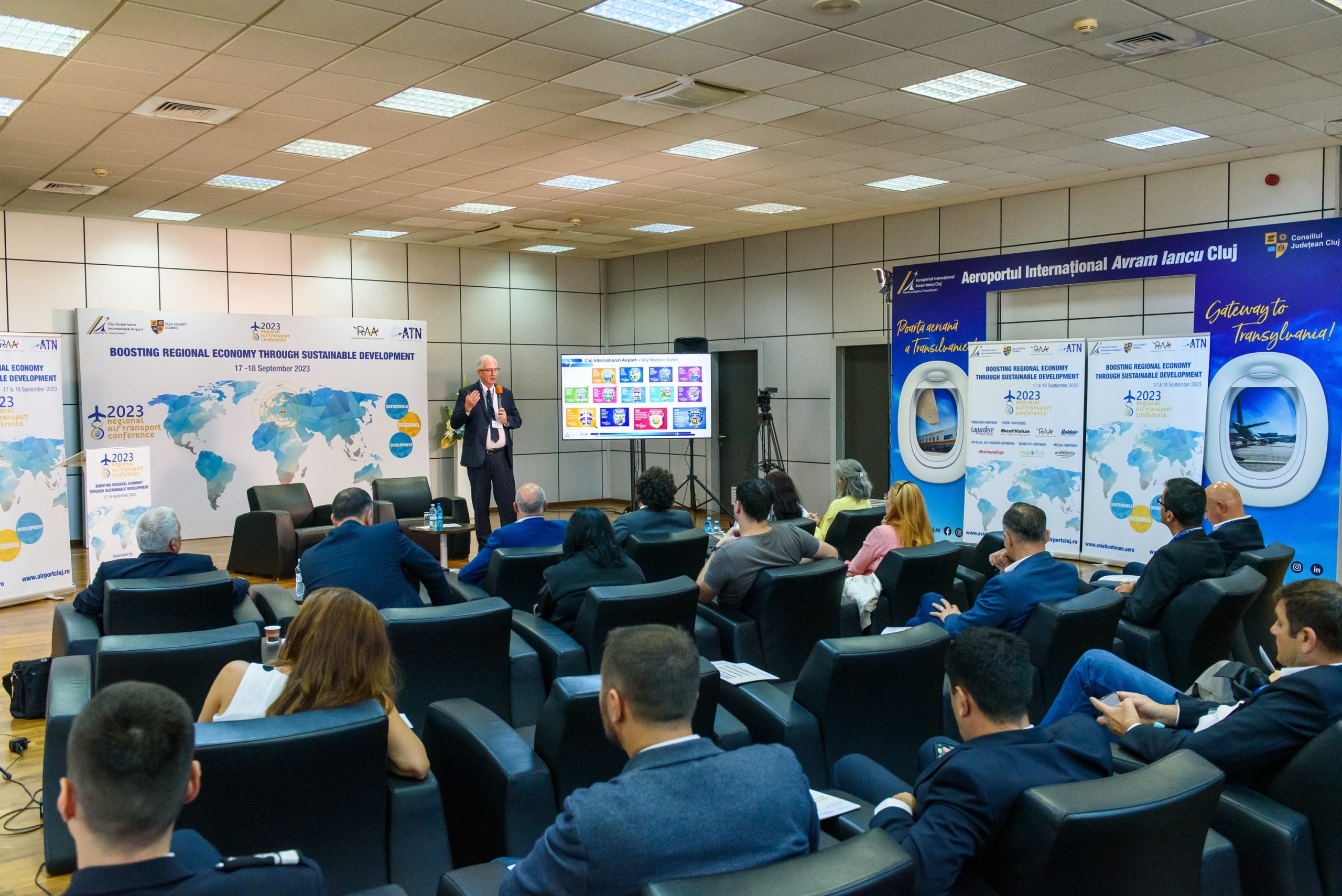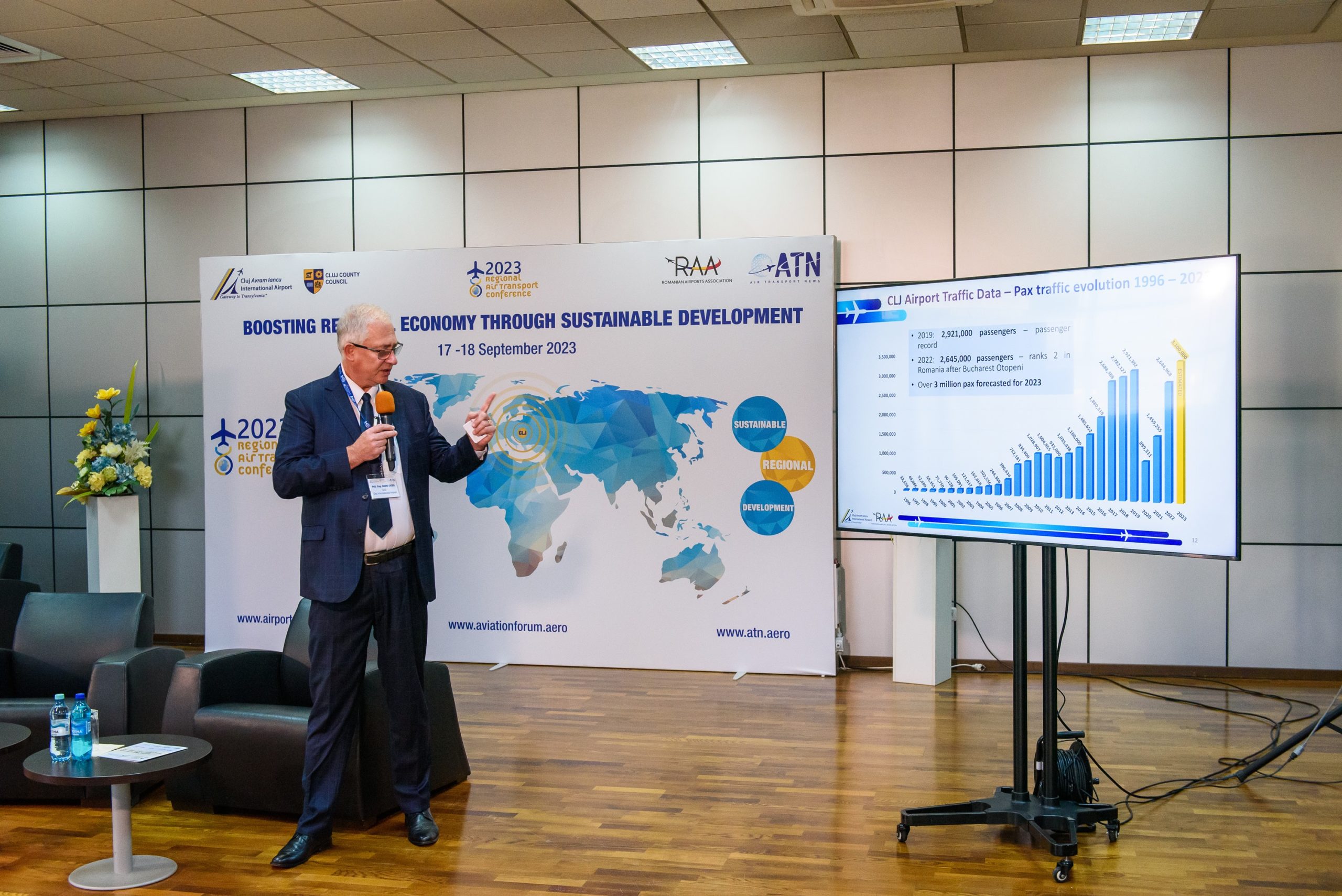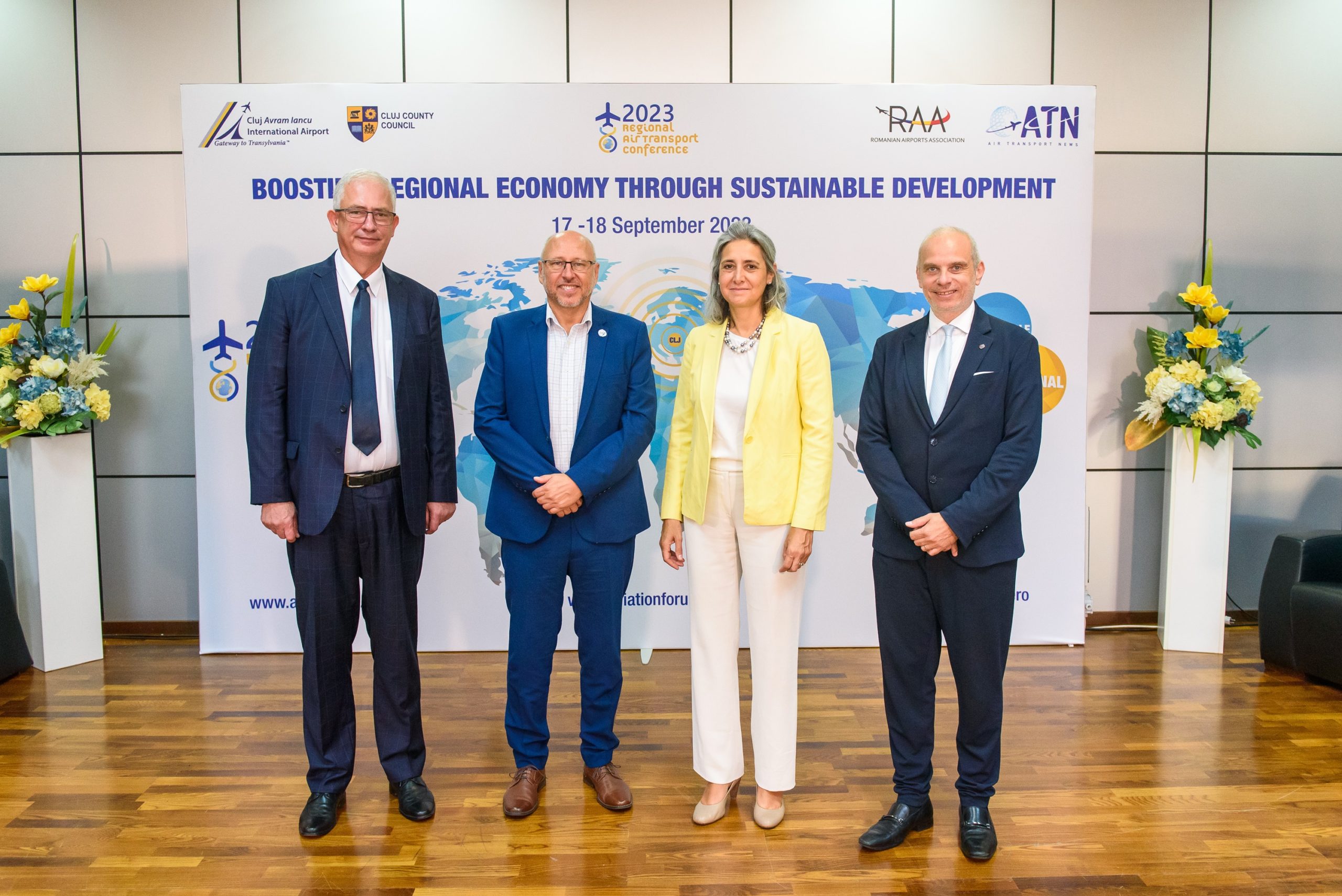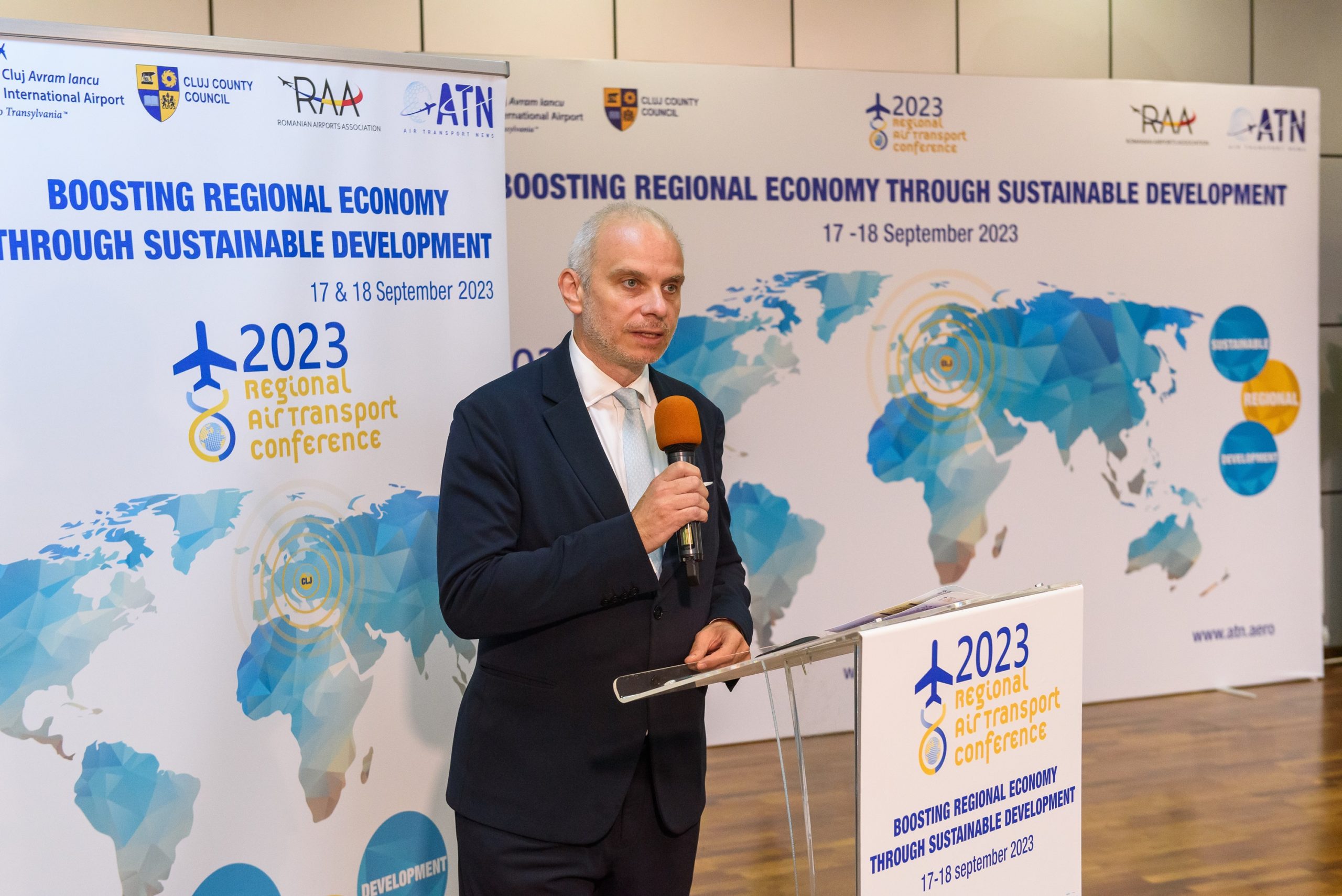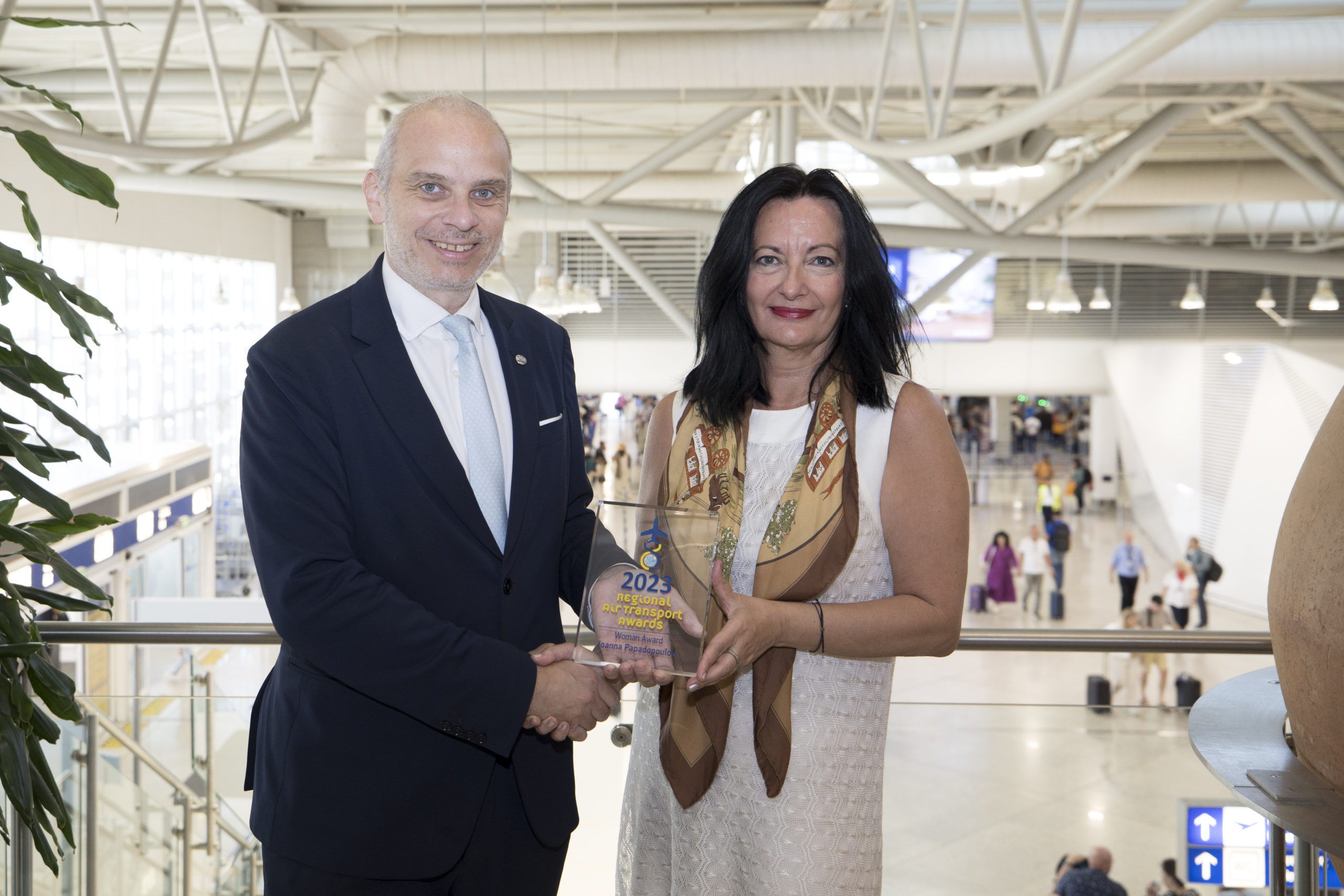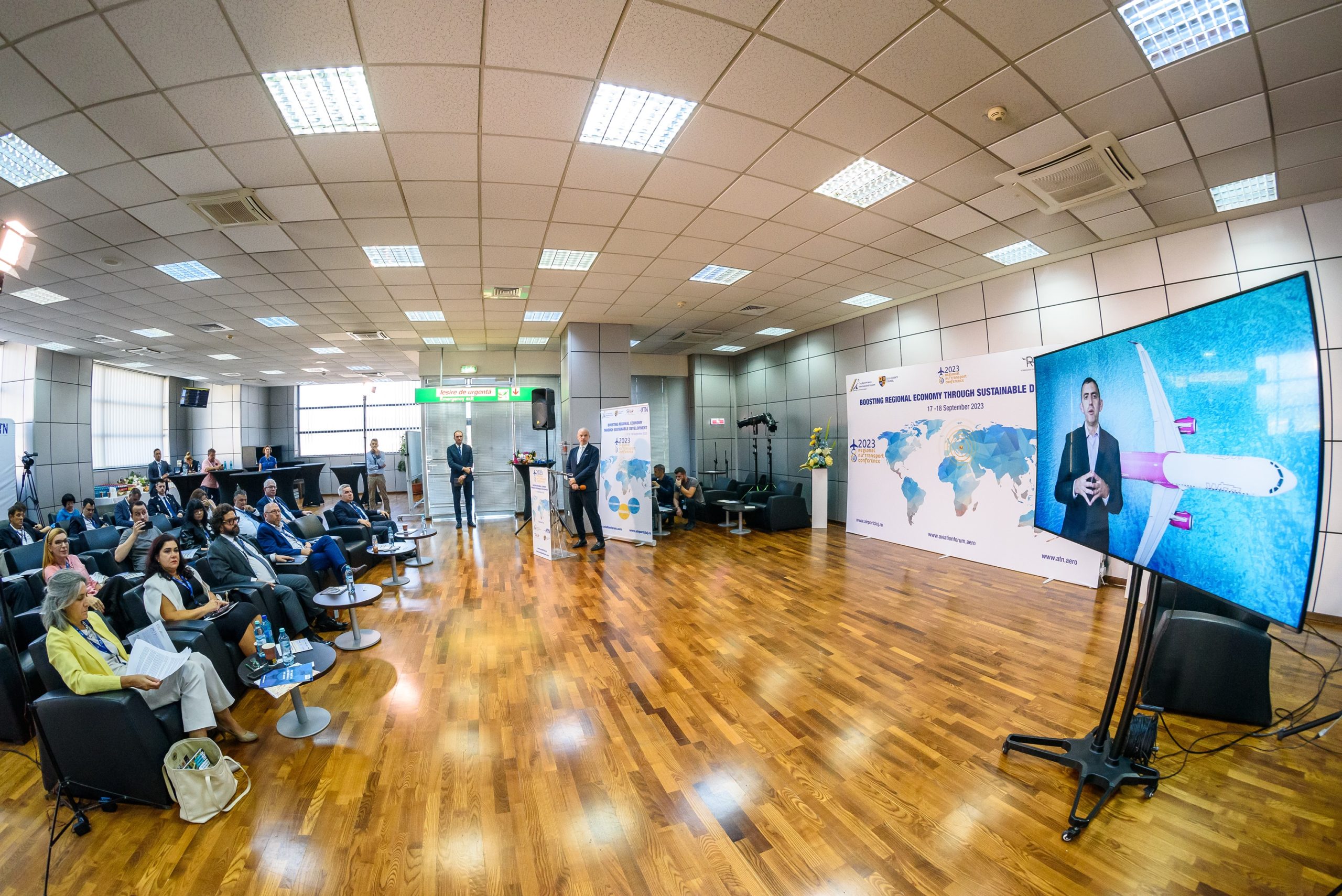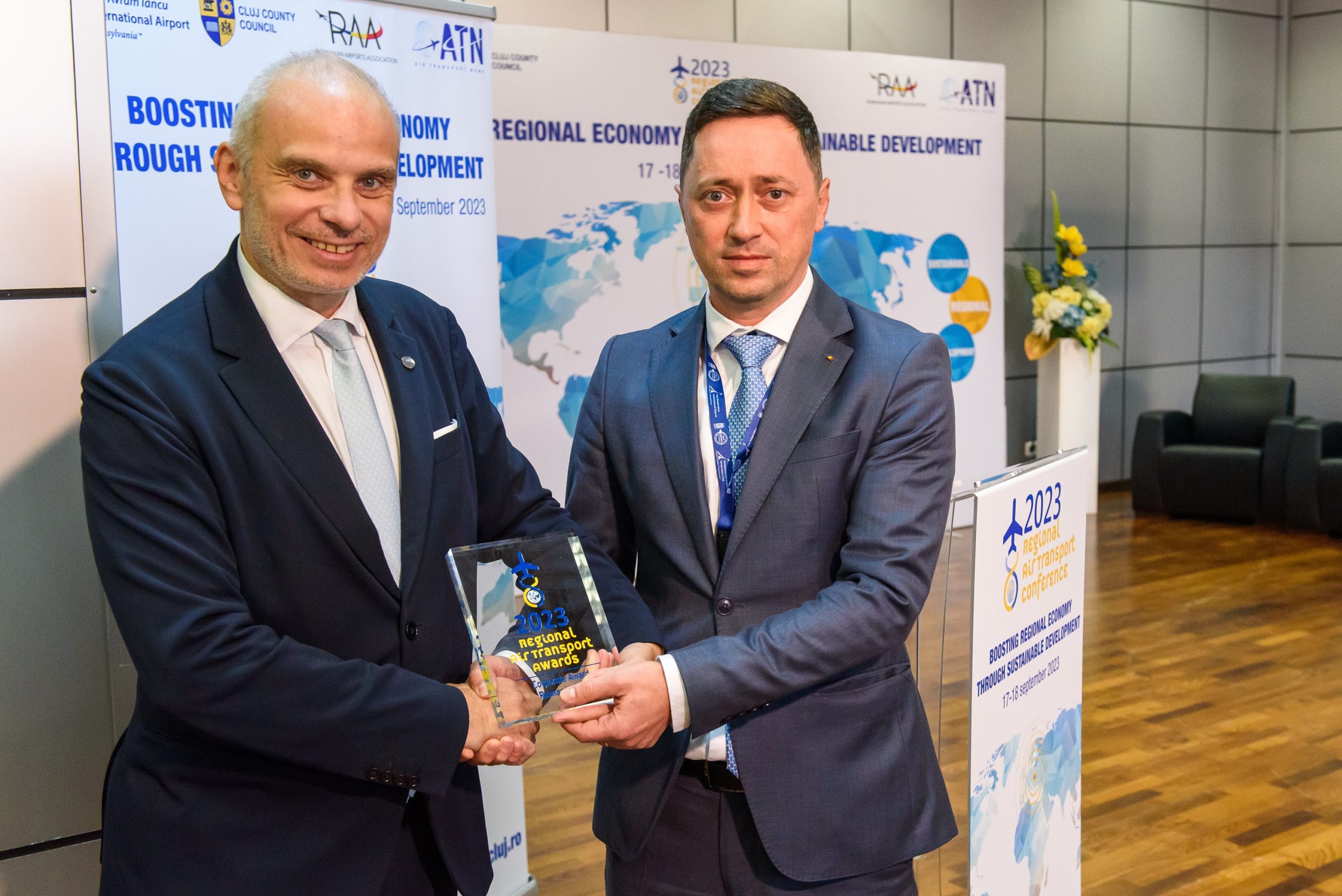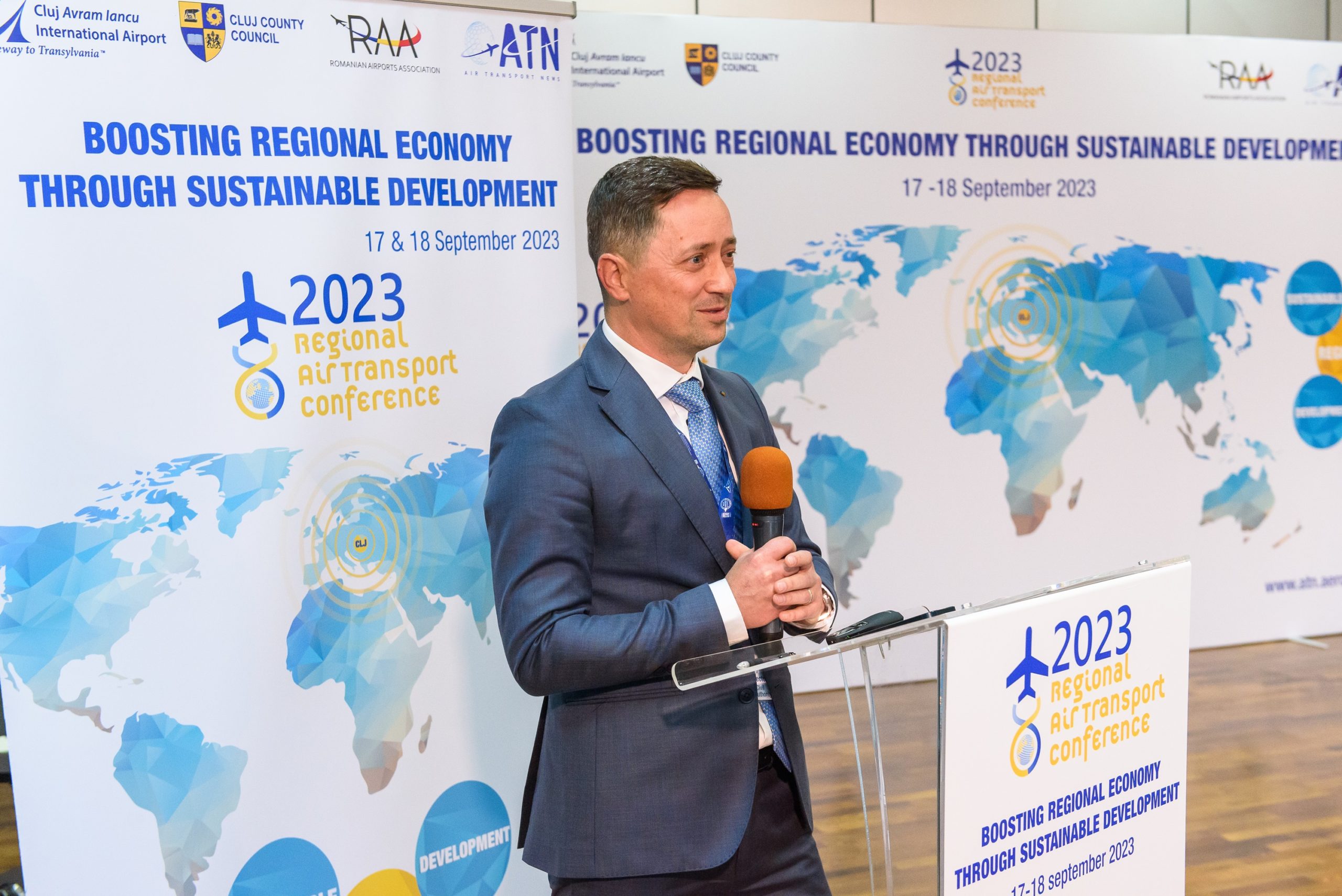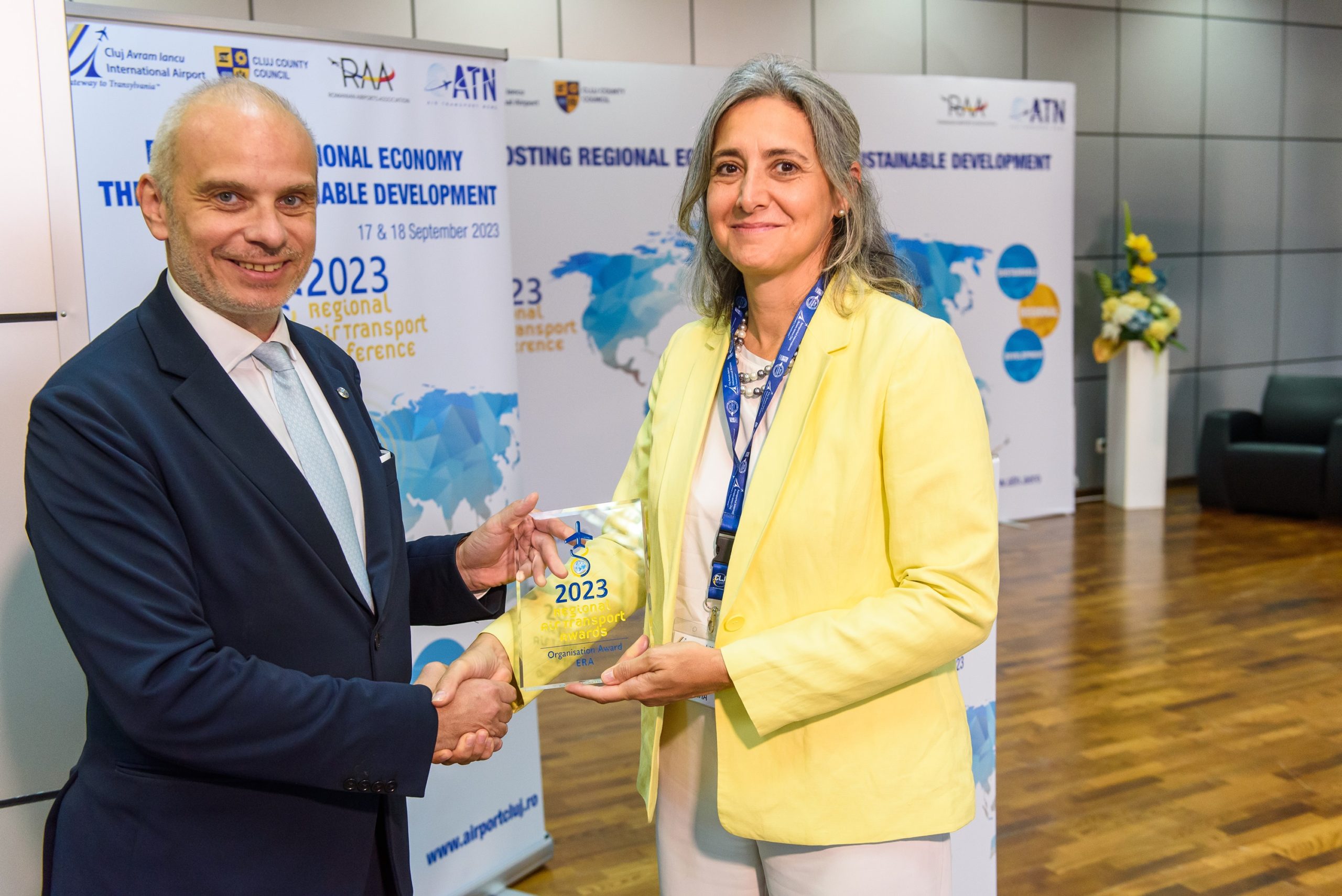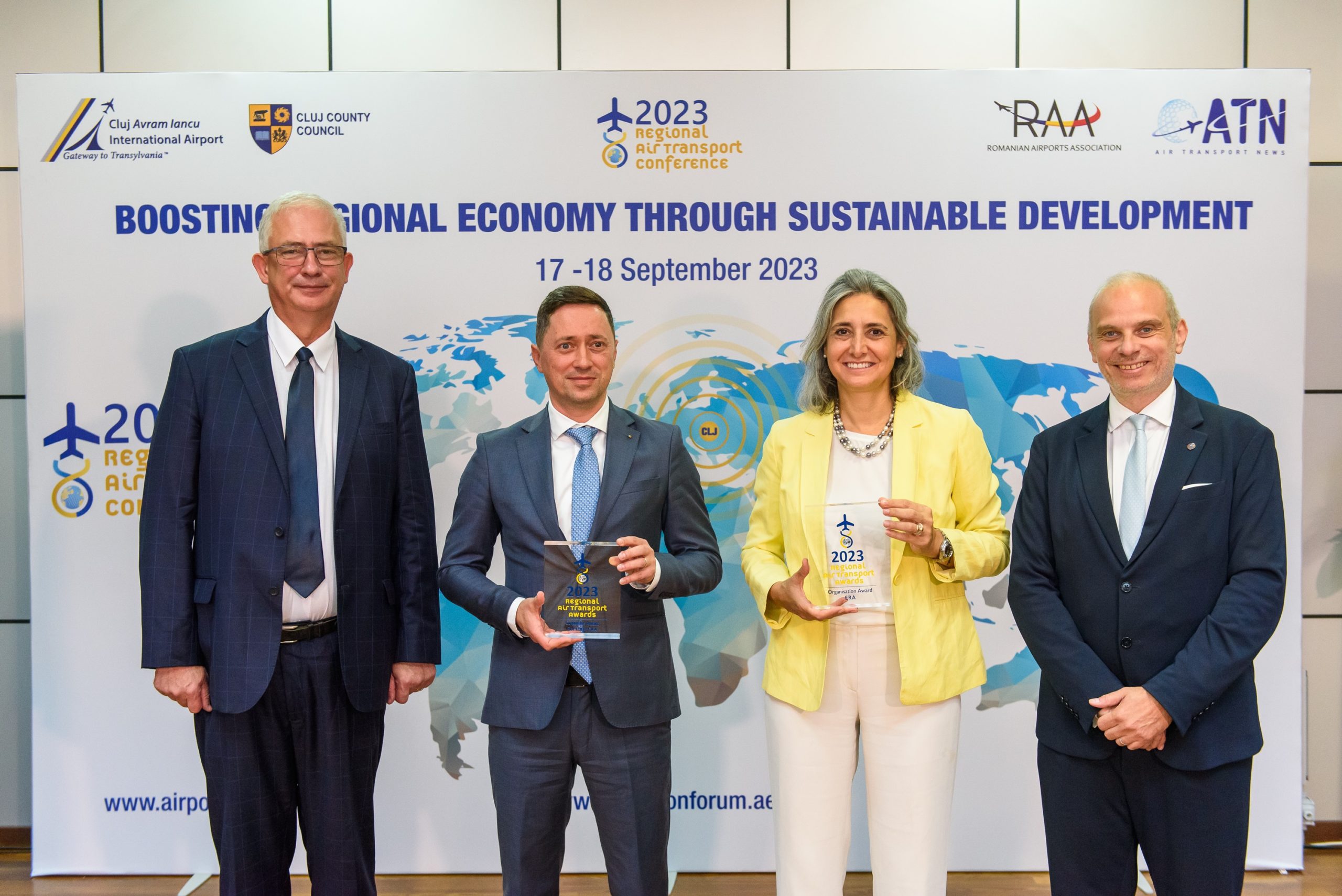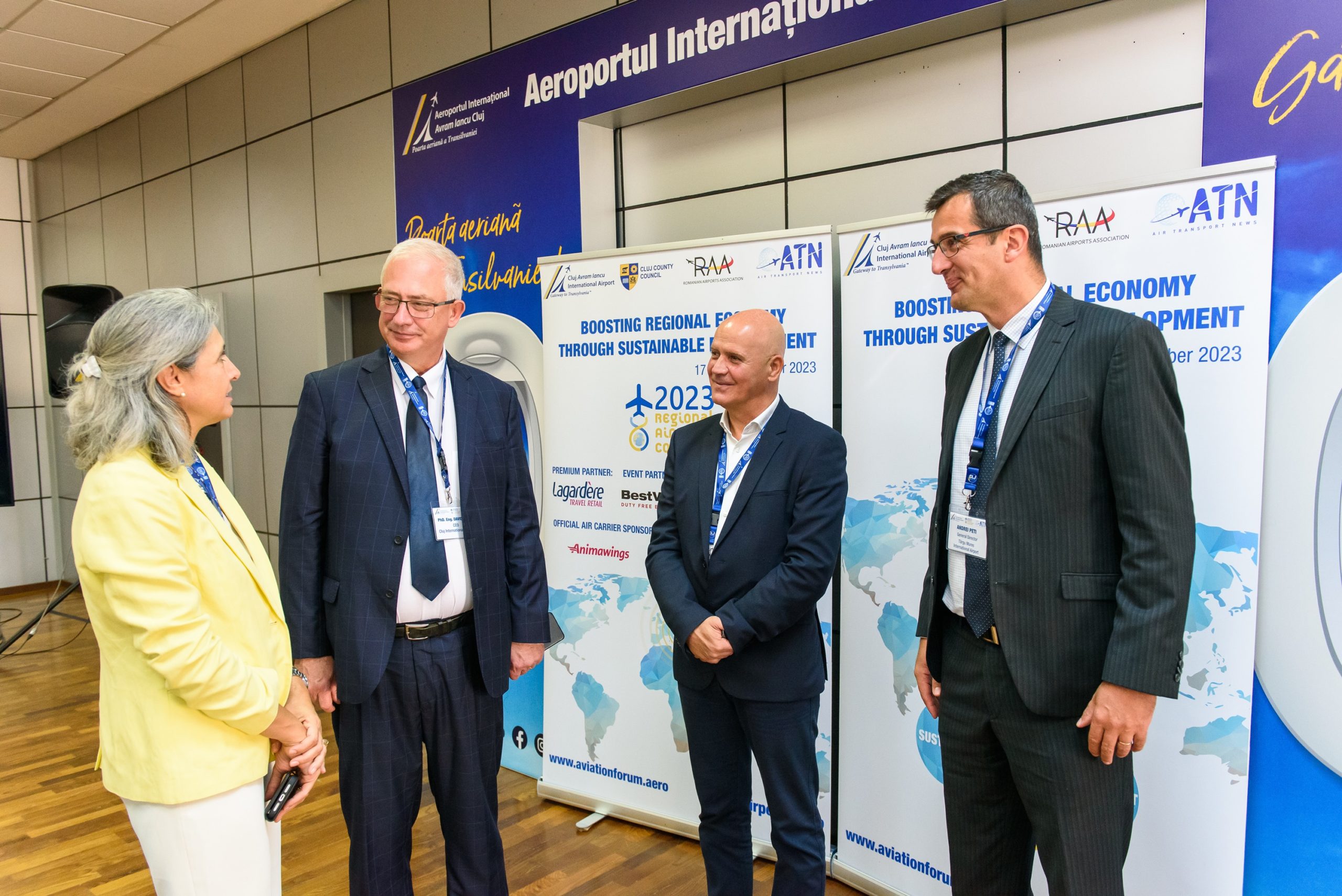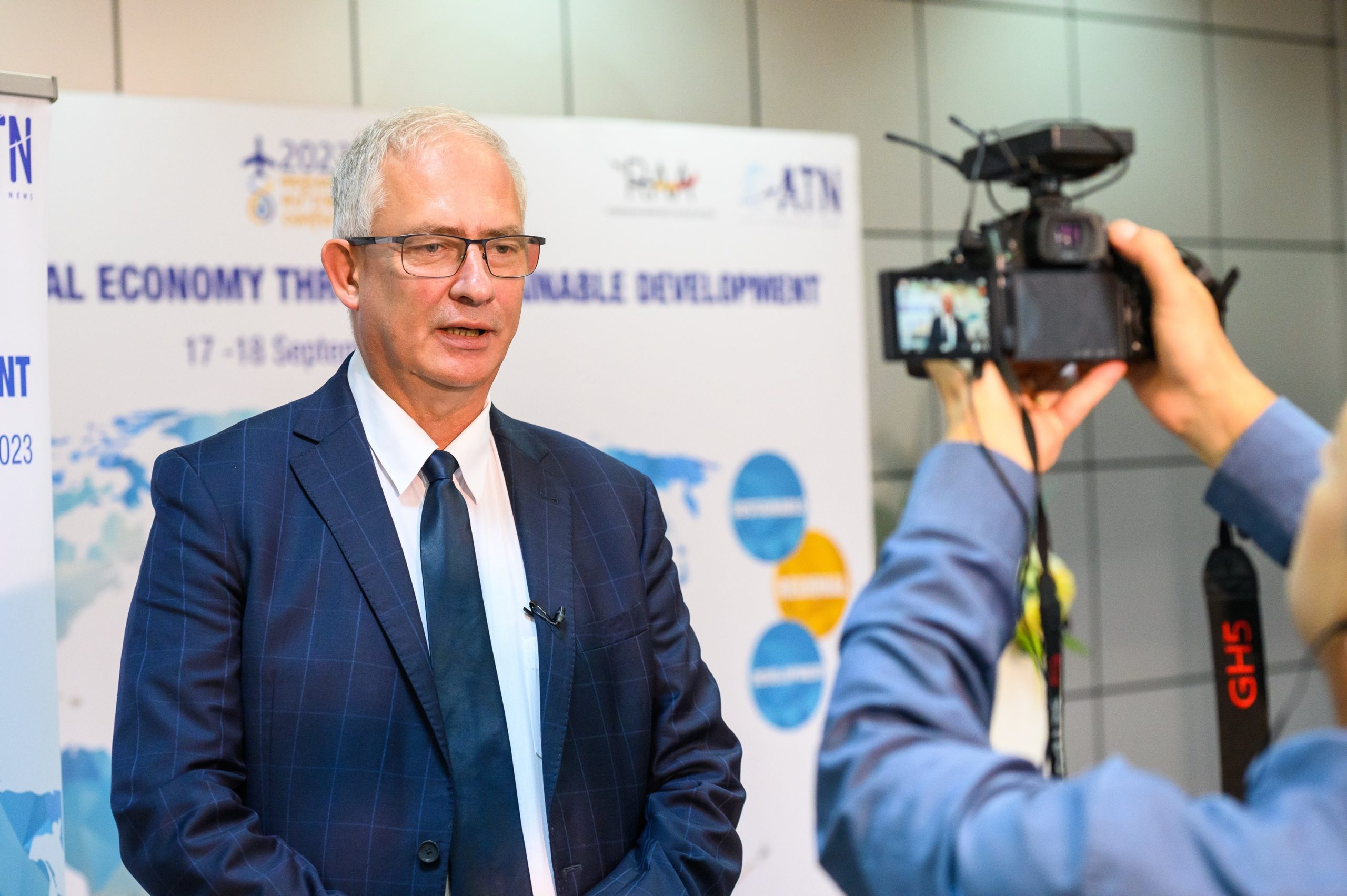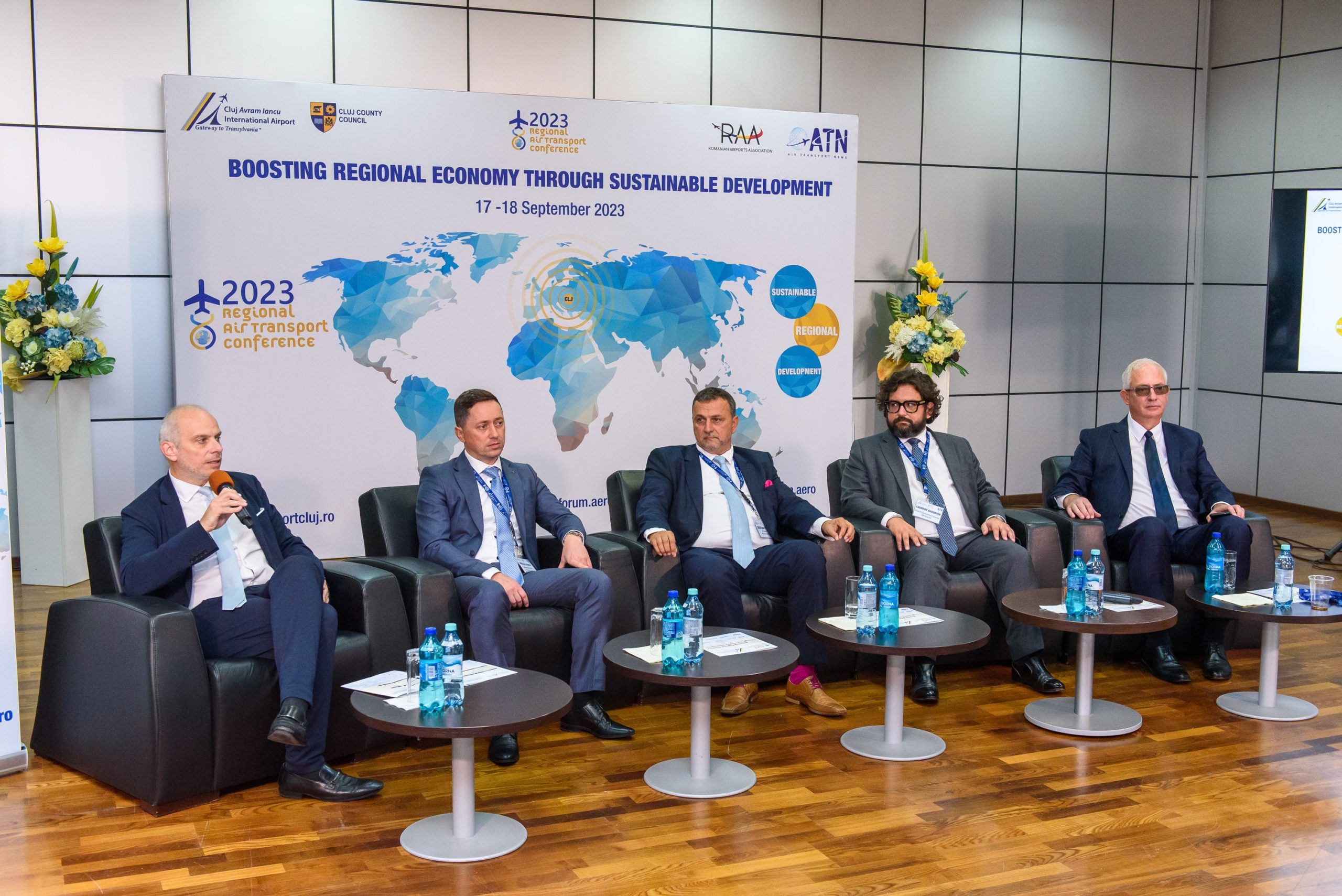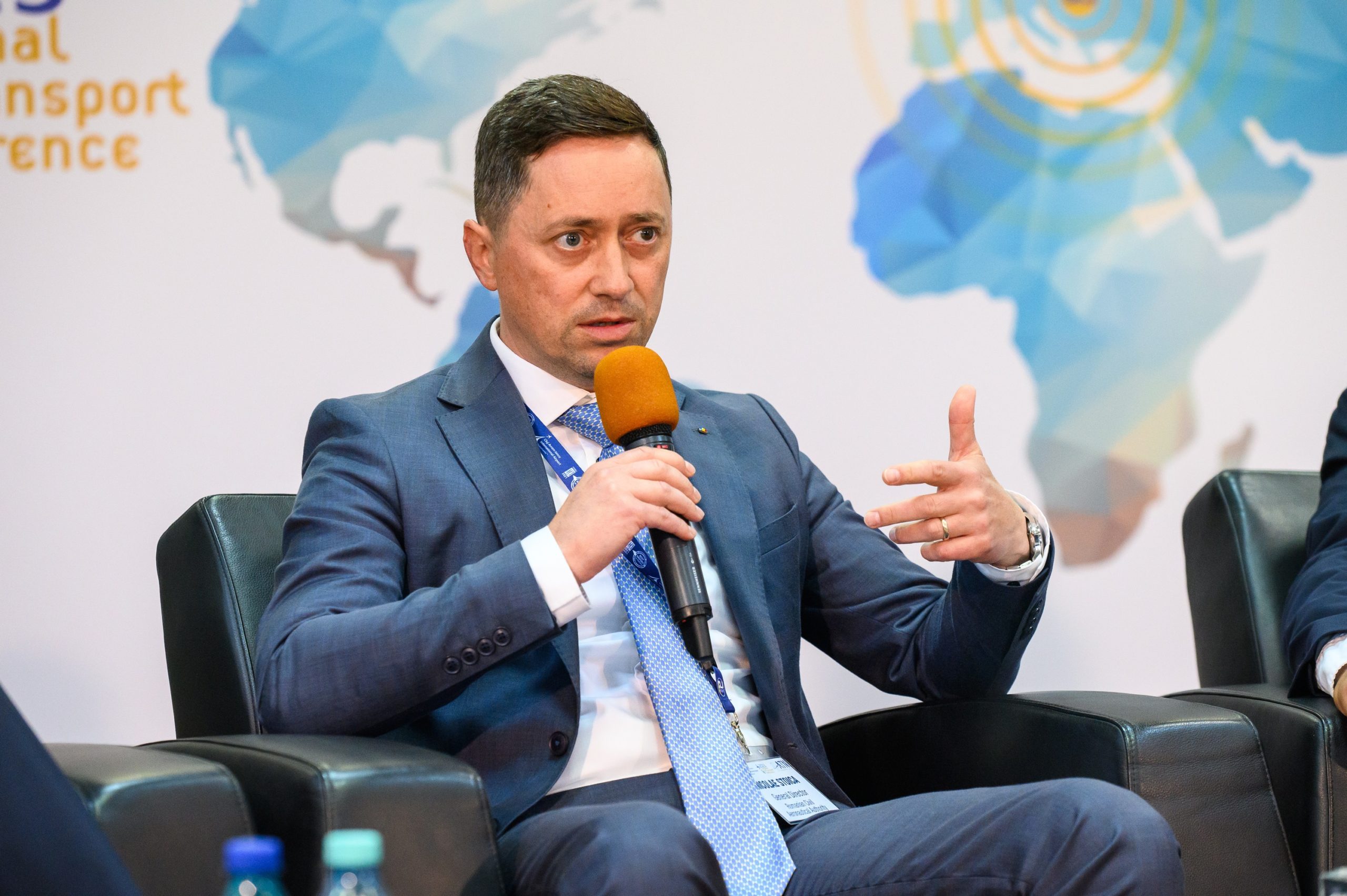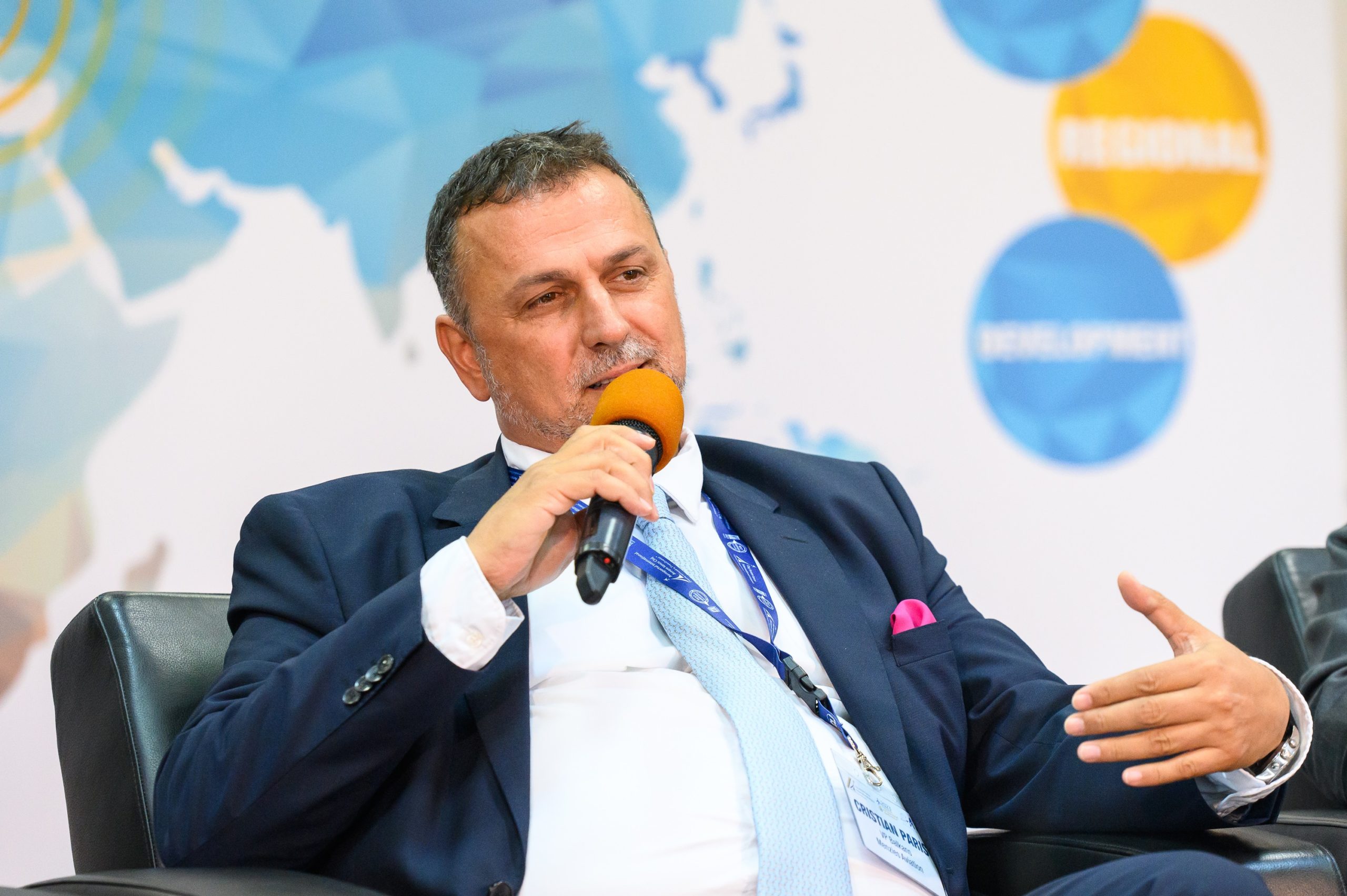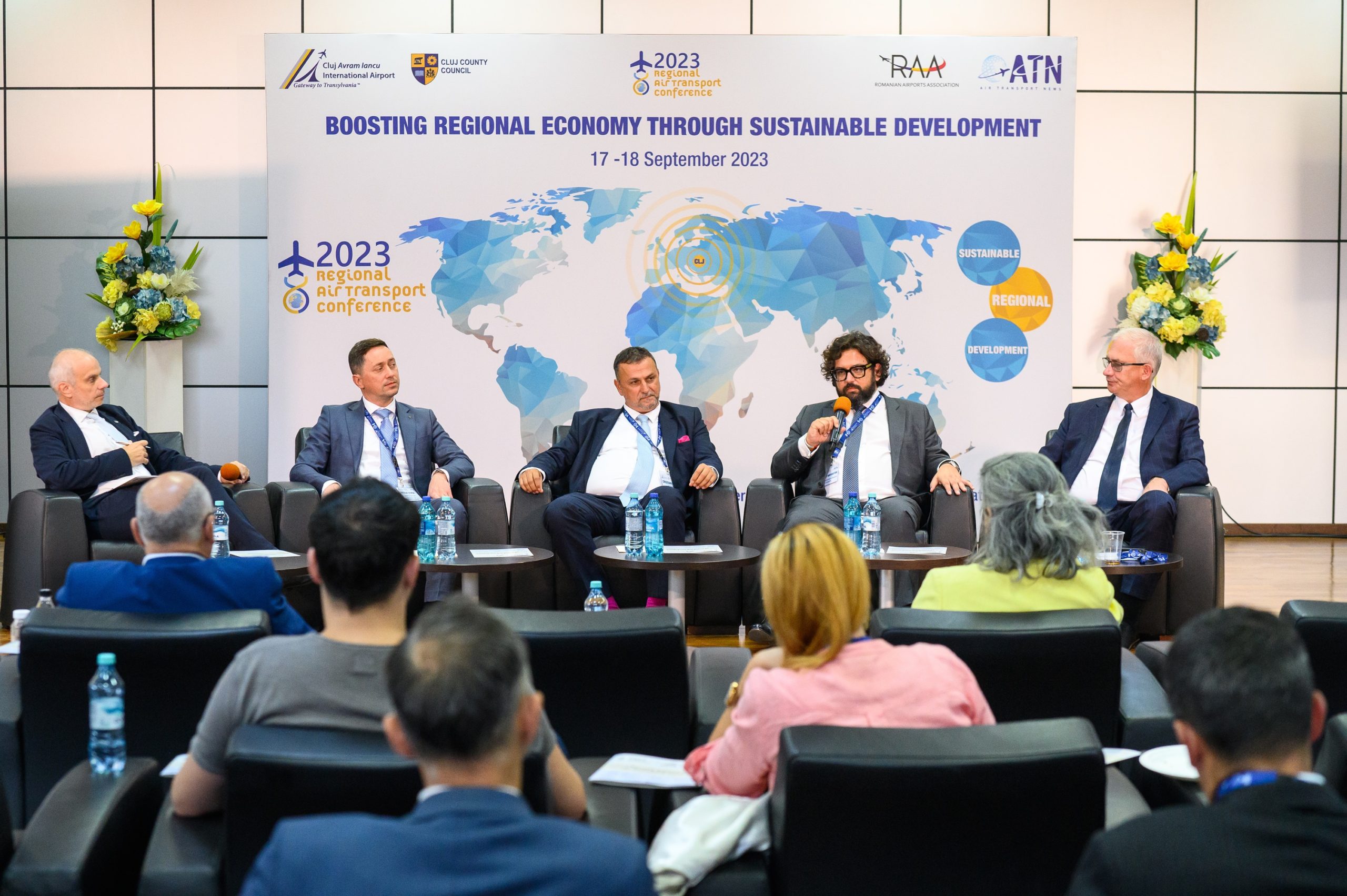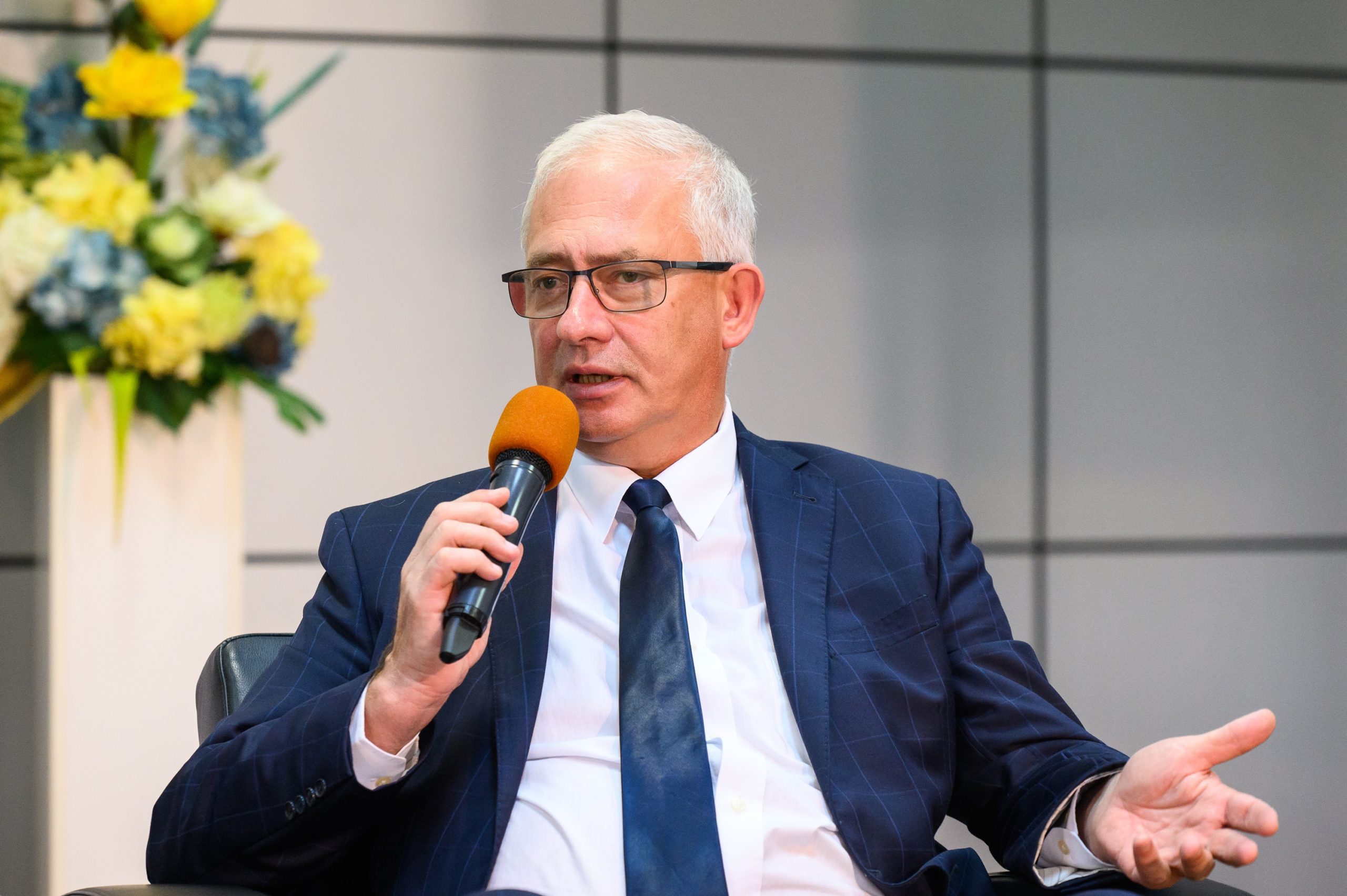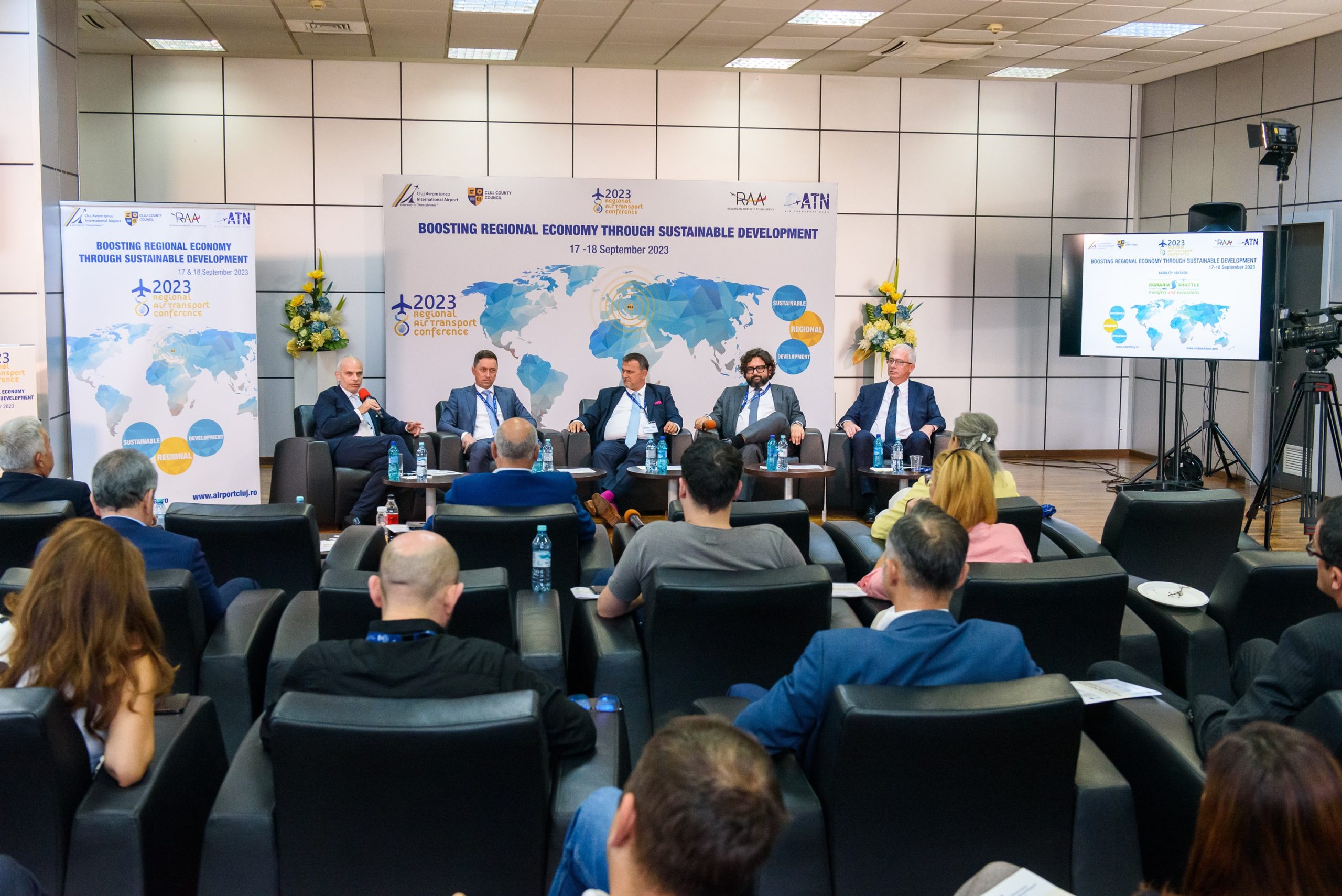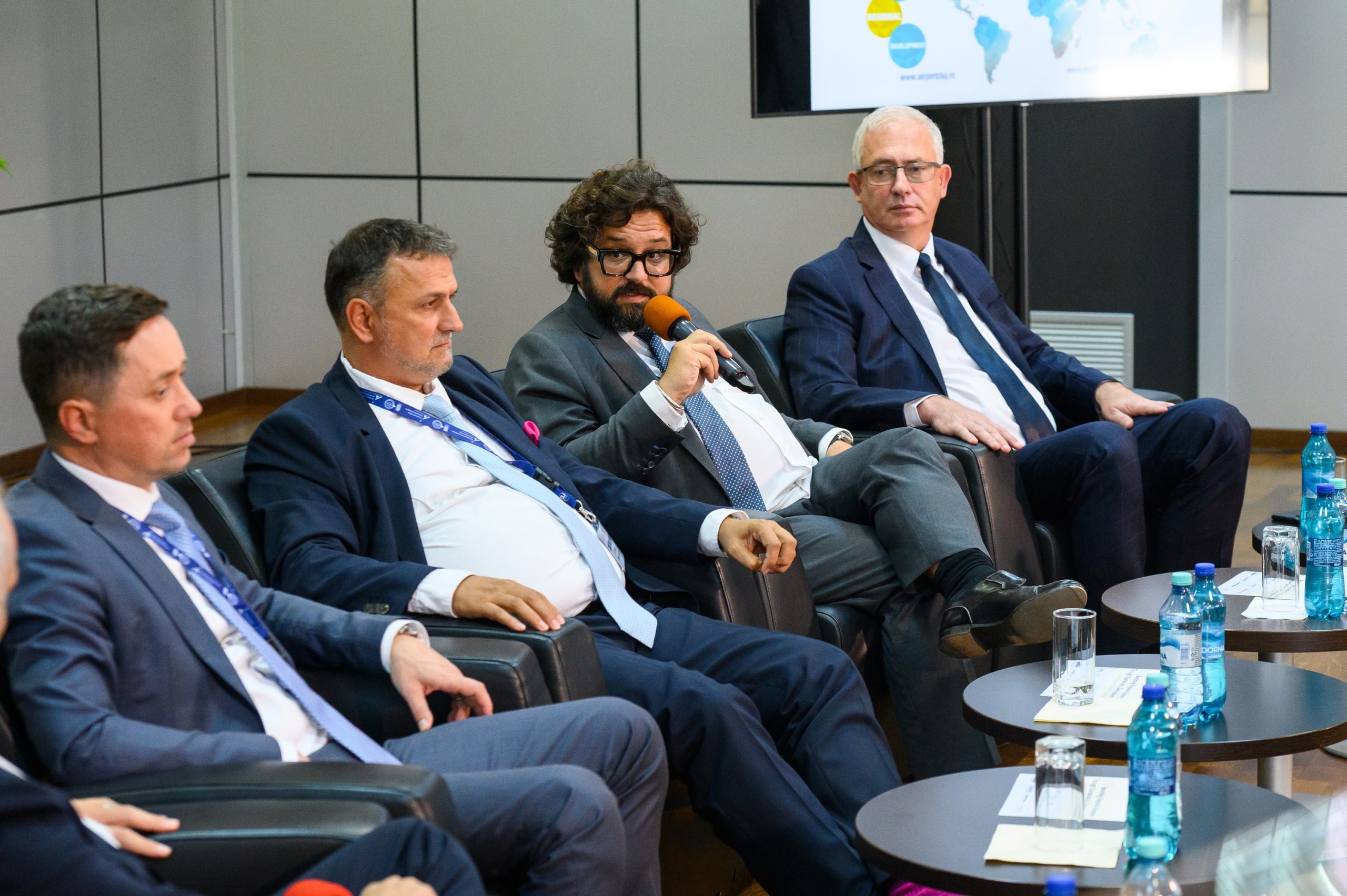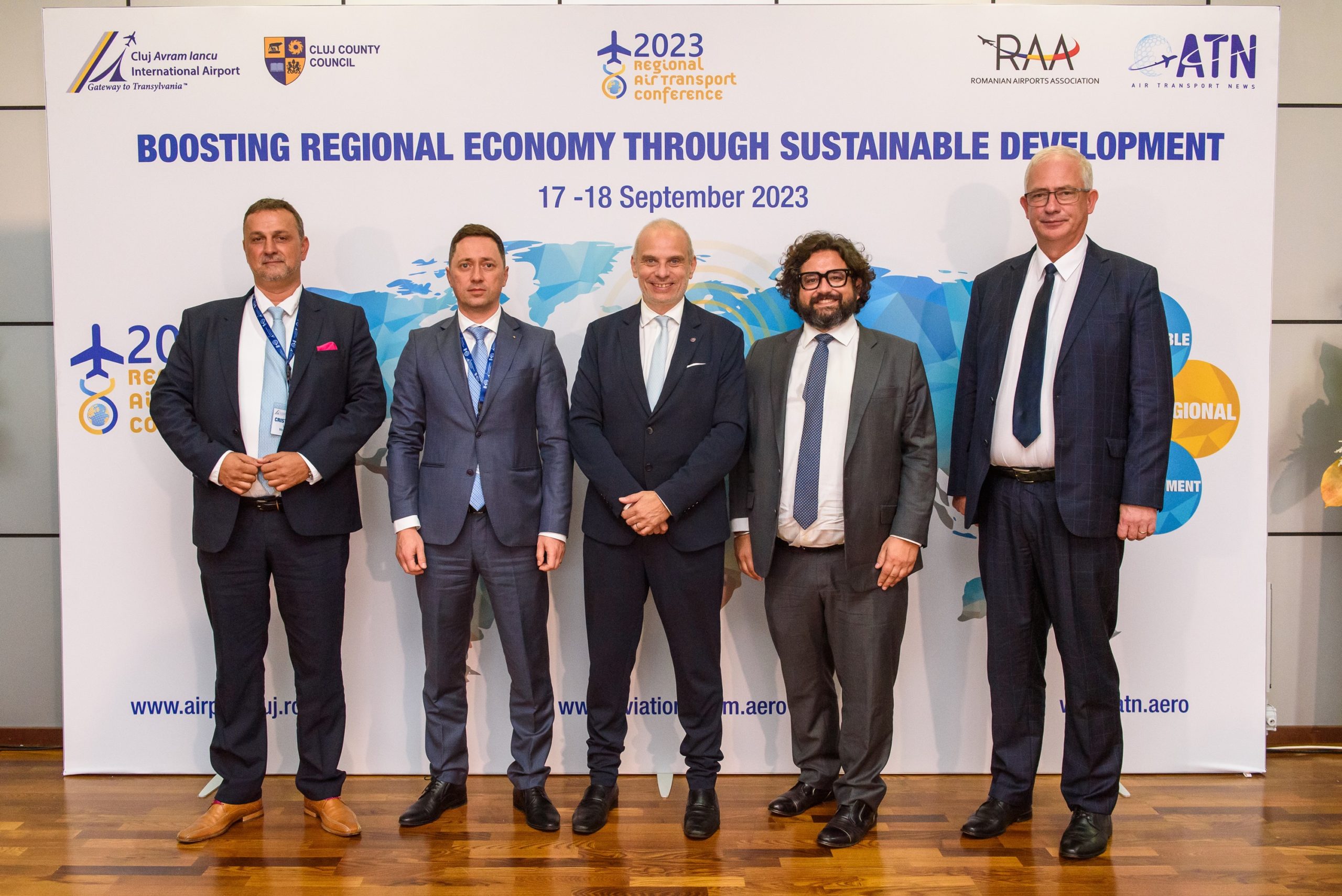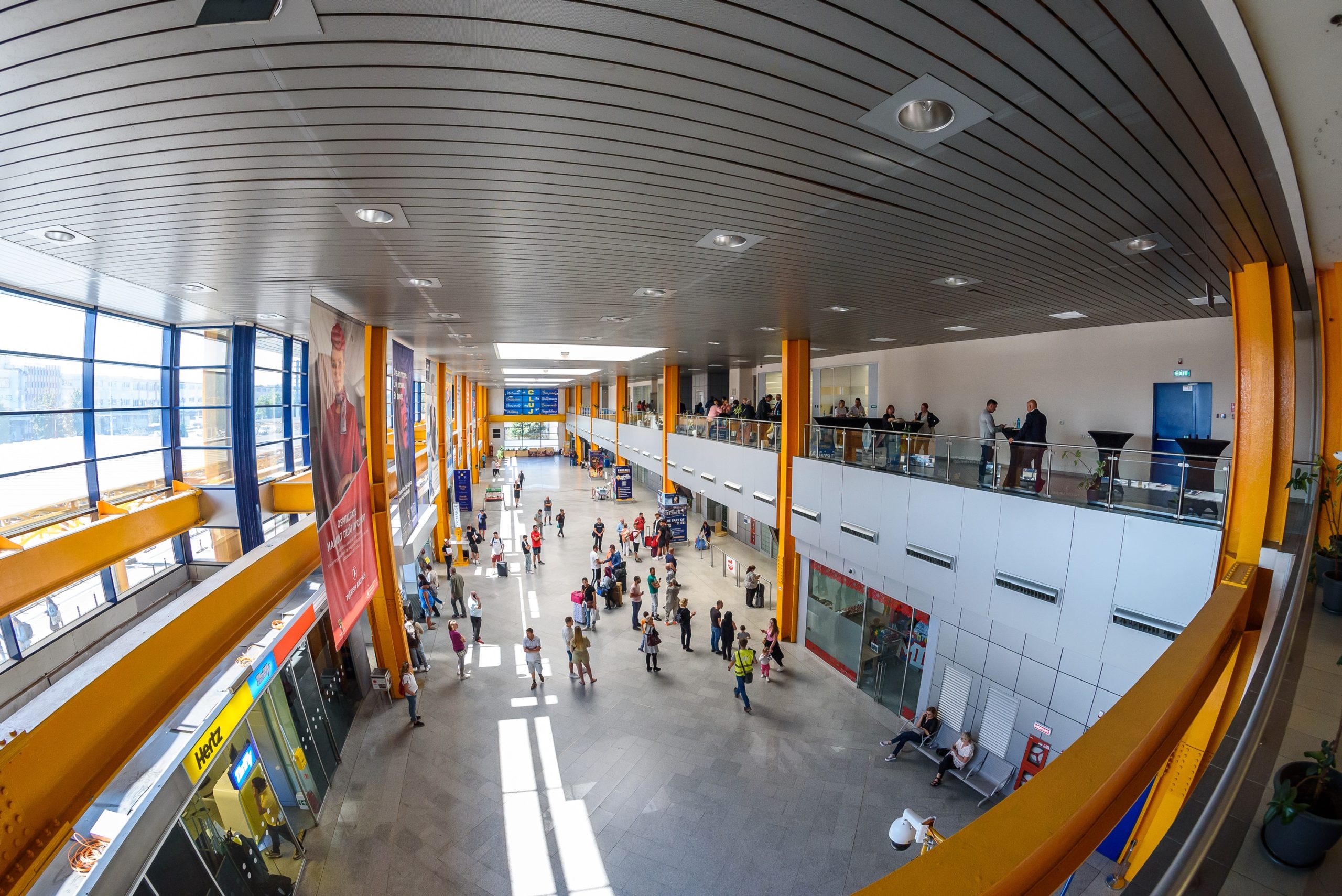
Boosting regional economy through sustainable development
17 & 18 September 2023
Air Transport is a catalyst in a local economy, especially in regional level. However the boost of aviation sector has to be implemented with a sustainable way. The conference will discuss this symbiotic relationship between the expansion of air travel and the sustainable development.
Sunday 17 September
20:00 Classical Music Concert – Cluj Avram Iancu International Airport, Arrivals Terminal
Evgenia Votanopoulou (piano) & Nina Patrikidou (violin)
Monday 18 September
09:00 Welcome Addresses
Dr Kostas Iatrou, CEO, ATN – Air Transport News
Dan Tarcea, Vice Mayor, Cluj-Napoca
Razvan Ciortea, Deputy Governor, Cluj County
09:15 Keynote Addresses
Luc Tytgat, Acting Executive Director, EASA (video)
Glyn Hughes, Director General, TIACA
Montserrat Barriga, Director General, ERA
10:00 Keynote presentation
PhD. Eng. David Ciceo, CEO, Cluj International Airport
10:30 2023 Regional Air Transport Awards ceremony
11:00 Coffee break
11:30 Leaders panel
Moderator: Dr Kostas Iatrou, CEO, ATN – Air Transport News
Nicolae Stoica, Director General, Romanian CAA
PhD. Eng. David Ciceo, CEO, Cluj International Airport
Cristian Paris, VP Balkans, Menzies Aviation
Laurent Barbotin, Project Development Director, TAV Airports
12:50 Conclusions
The 2023 Regional Aviation Air Transport Conference was held on 17th and 18th September for the second consecutive year at Cluj-Napoca International Airport , Romania, to discuss the challenge of how to “Boost Regional Economy through Sustainable Development” in a sustainable way with the participation of high level panelists/ Prominent leaders: Luc Tytgat, Acting Executive Director, EASA, Glyn Hughes, Director General, TIACA, Montserrat Barriga, Director General, ERA, PhD. Eng. David Ciceo, CEO, Cluj International Airport , Nicolae Stoica, Director General, Romanian CAA, Cristian Paris, VP Balkans, Menzies Aviation, Laurent Barbotin, Project Development Director, TAV Airports. The leaders’ panel was moderated by Dr Kostas Iatrou, CEO, ATN – Air Transport News.
Covid has shown what can happen to small communities without aviation connectivity as the local economy needs flight connections. Regional airlines provide connectivity all year round playing a social role, contributing to economic development, growth of the region, investment, tourism, employment and full access to the Single European Market thus promoting cohesion across Europe and addressing regional disparities. Although the number of flights operated on a 700-800 km has grown in Europe, the network of routes operated on moderate sized airports has changed in Europe since the pandemic show that some airports have suffered reduced connectivity in terms of frequency of services. Airlines have experimented on new routes but regional airline services are still 7% below the pre Covid numbers
Prioritizing short turnaround times and high aircraft utilization may be at odds with flying to remote, peripheral airports where scheduling is prioritized by the needs of the local community. One major concern is the high level of “route churn”: the trend by which airlines enter or leave markets, start or stop routes and operate only regional services in order to maximize their profitability following market demand. Regulation and incentive plans have to change.
There have been changes in consumer behavior who can now increasingly make informed choices on the basis on neutral reliable data. Travelers are booking trips later and airlines have to adjust their capacity much closer to the flight departure which has implications for airports. It is LCCs that have been able to grow their share of capacity indicating that the business model that prioritizes low fares and robust cost control is very attractive to customers but they will walk away if the conditions are not right for them leaving regions reliant on air services without connections. The boost to decarbonize has pushed customers not to fly on short distances and use other ground based modes of transport. It is was stressed that short haul flight bans should be implemented only if the same level of connectivity can be ensured by another mode of transport and which is as safe as air transport and it should be introduced only with consultation with local authorities.
Participants stressed that there has been and there is a symbiotic relationship between the expansion of air travel and the sustainable development. SAFs are very important in the short run but unless their implementation is achieved within the existing infrastructure regional airport will have difficulty making the necessary investment in new infrastructure. Above all, SAFs have to be made cost effective and easy to access. Technological developments in the design of aircraft and engine, drones, VTOL aircraft even if it is too early to say for some such as hydrogen, will play a key role but new business models will be needed for their integration in the air space. Such changes will also mean retaining, retraining employees and changing their mindset.
For small airports especially in Asia and Africa is almost impossible to decarbonize or go electric. All new plans and designs have to “integrated in the DNA” carbon neutrality and energy saving carbon neutrality “integrated in the DNA” as any financing is with sustainability compliance and environmental constraints.
They all stressed that aviation is “under attack” when it is come to sustainability and environment. It is blamed when it is the industry making the strongest efforts to decarbonize. It should become more aggressive in portraying both the work of the industry towards decarbonisation and on the social and economic benefits it provides. Authorities and the public push for short haul ban when ground modes of transport when the shift to rail and cars do not provide the intended environmental benefits: considering the time needed to build new rail lines and the high environmental cost due to the CO2 emissions of the cement and steel production that will be used aviation comes out a winner as it will have achieved carbon neutral long before.
They also acknowledged that aviation has lost the “wow” factor and is unable to attract young talents therefore experiencing human resources shortages. Digitalization eases the flow of passengers and the less stress passengers have the better the image and visibility of the airport and the airlines. Staff in the airport in the future will have a more hospitality role on top of safety and security. Although it will become less labour intensive thanks to robotics staff will be needed to carry out certain jobs and given that Europeans are unwilling to perform them personnel from Africa or Asia will have to be used.
Finally, they agreed that air transport stakeholders along the value chain need to “cooperate even if they compete”, adoption of best practices is a must. Collaboration, compromise and transparency have been the key to the development of aviation and will continue to be.


